-
Posts
725 -
Joined
-
Last visited
-
Days Won
10
Content Type
Profiles
Forums
Blogs
Gallery
Events
Store
Posts posted by No one
-
-
Dear Gentlemen,
Some beautiful pictures here:
- SPA 158 Serpentaire: SPA 158 Serpentaire (traditions-air.fr)
- SPA 161 Sphinx: SPA 161 Sphinx (traditions-air.fr)
Biography of Captain Michel Croci (source: © Armée de l'air):
-translation google-

Michel Croci was born on July 26, 1944 in Montmartin-sur-Mer, in the Handle. A young soldier called up from class 64, he was drafted on 4 November 1963 at the Entrepôt de l'Armée de l'Air n°603 (based in Limoges) before joining, at the end of his classes, the annex ammunition warehouse 1,605 at Rocamadour. As secretary of the stores group, he showed a dedication and of remarkable seriousness, which earned him promotion to the rank of corporal then as a master corporal before finishing his military service. At the end, He contracted a seven-year commitment from 1 May 1965.
Indeed, his ardent desire to embrace a career as a fighter pilot led him to follow the circuit of the schools of the aircrew of the Air Force.
Six months later, with the basic pilot phase completed, it is selected for the hunting specialisation. Sergeant Croci was then assigned to the 314 Training Group stationed at the 705 Air Base in Tours in order to continue his training, first on T-33 SF T-Bird and then on Mystère IV.
In the spring of 1968, the young fighter school graduate made his operational transformation course within the 1/8 Saintonge Squadron in Cazaux before choosing his first assignment in the air force. This will be the 11th Wing equipped with North American F100 Super Sabres.
It was the 1st squadron of the 3/11 Corsican Fighter Squadron that welcomed him on 10 June 1968. Staff Sergeant Croci then consecrated the next three years to climb the qualification ladder until the certificate of deputy patrol leader.
Transferred to the School Group 315, she joined the Cognac base on 17 August 1970 after having carried out a three-month instructor internship at GE 313 in Aulnat. Warrant Officer Croci took advantage of this stay to succeed in the training course of the reserve officer cadets that he followed to Evreux at the end of the winter 1970-71. He was admitted to serve in an active service as of October 1 of the same year.
In Cognac, the young officer demonstrated such human and pedagogical qualities and professional as a driving instructor that he is rewarded in July 1972 with a letter of congratulations signed by Colonel Pontois, commanding Air Base 709.
In January 1973, back in a combat unit in Toul-Rosières, he resumed his operational training for a year and then brilliantly obtained The highest qualification for fighter pilots: the chef's licence patrol.
He then took command of the flight training squadron 11 Wing Blind where he creates an excellent working climate and trust, while showing
It was on 25 May 1976 that Lieutenant Croci joined the Fighter Squadron 4/11 Jura,unit to which he will now link his career as a fighter pilot officer.
Recreated in 1973 to defend the airport complex of Djibouti, this squadron is made up of two squadrons, the SPA 158 Serpentaire and the SPA 161 Sphinx. Missions that take place over a small territory, are no less very diverse: classic assault, support of troops in the air defence, escorts in the Red Sea, and even reconnaissance during the Somali-Ethiopian conflict.
Deputy to the squadron commander, Lieutenant Croci continues to demonstrate his qualities of seriousness and availability, but he also knows how to put to the benefit of his talents as an artist: indeed, on the occasion of the 10,000 hours of this unit, which is not yet six years old, has the characteristic profile of the of the Super Sabre of the "Jura" is highlighted by a superb face of his own shark.
Relieved by the Mirage III C of the 3/10 Vexin Fighter Squadron, The 4/11 squadron was disbanded on 31 December 1978, but it was reborn from its ashes in mainland France the next day.
After reforming in Toul, he settled, equipped with combat planes Jaguar type, at the Bordeaux-Mérignac base ; its new mission includes, in addition to protecting the south-west region, intense participation in external operations.
It is in this context that Captain Croci, while first commander of SPA 158 then, from September 1982, chief of operations of the squadron, carried out numerous secondments in Africa and participated in particular to the "Tacaud" operation.
Apart from these stays, he directs the operational life of the "Jura" which is punctuated by many highlights: shooting or supersonic combat, regional, national or international exercises, exchanges with foreign units, etc.
On January 25, 1984, while on secondment to N'Djamena as part of the "Manta" operation, it flies away at the head of a mixed Jaguar / Mirage F1 patrol to carry out a Armed reconnaissance mission over hostile elements in the region of Torodum (Chad). He died when his plane, probably hit by a projectile, exploded.
The mention "Died for France" was awarded to Captain Croci by decision of the Minister of Defence and his funeral was celebrated at Air Base 106 in Bordeaux-Mérignac on Friday, February 3, 1984, in the presence of Mr. Charles Hernu, Minister of Defense, and senior civil and military personalities. That on the same day, he is summoned, posthumously, on the order of the Air Force by the Minister of Defence, Defence: "Officer with professional, human and military qualities Outstanding Fighter Pilot, Outstanding Fighter Pilot, Patrol Leader particularly experienced with a total of 3860 flight hours, including 1100 hours on Jaguar.
His personality, his very deep faith in the mission, his influence and his dynamism had allowed him to establish himself very quickly as a Squadron Operations Manager.
Detachment Commander, as part of Operation MANTA, made the sacrifice in the performance of his duty during a mission reconnaissance over hostile elements on the 25th January 1984, in Torodum (Republic of Chad)".
On May 23, 1995, the Air Base received the traditional name "Captain Michel Croci " in honour of this fighter pilot officer.Mort du capitaine CROCI ; 30 ans déjà | 11 ème Escadre de chasse (pilote-chasse-11ec.com)
-The insignia of the EC 04/011 Jura for "Operation Manta" Y.Delsart 89100 Sens:
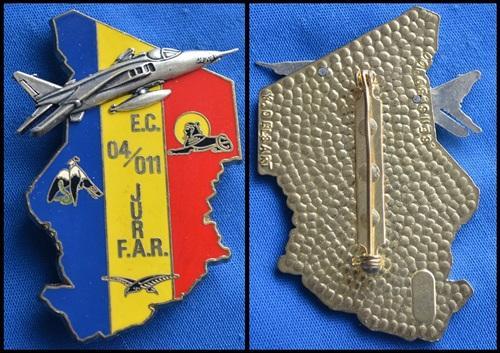
-This book for those interested:
- insignia of "Tacaud" operation Drago Paris:
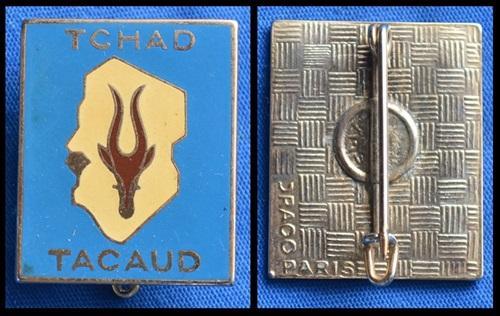
- insignia of "Manta" operation Y.Delsart 89100 Sens:
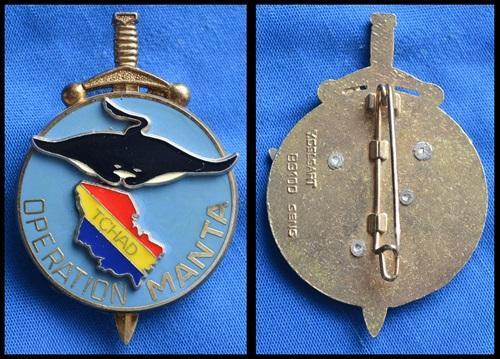
Yours sincerely,
No one
0 -
Dear Gentlemen,
The environmental equipment support squadron monitors the availability of the material resources of the units at the base in order to ensure that they can carry out their missions and, if necessary, carry out the appropriate maintenance operations.
Presentation of the patch of the Aeronautical Environmental Material Support Squadron* in Djibouti:
*Escadron de Soutien Matériel d’Environnement Aéronautique / ESMEA 2B-188
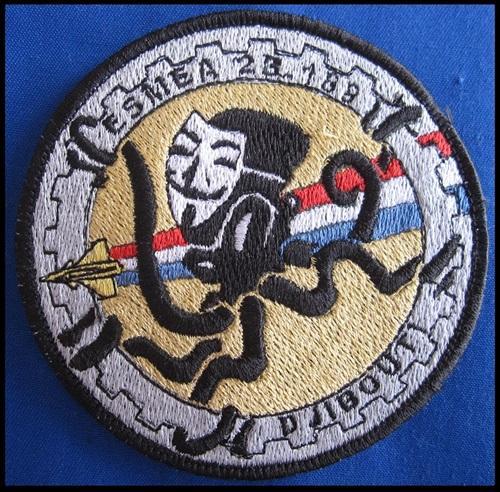
Yours sincerely,
No one
0 -
Dear Gentlemen,
A miniature of the Mérite Militaire :

Yours sincerely,
No one
1 -
Dear Gentlemen,
"Sorry but it the onliest picture of him with the sash of the National Order I have been able to found.
If anybody here can help he's most welcome."
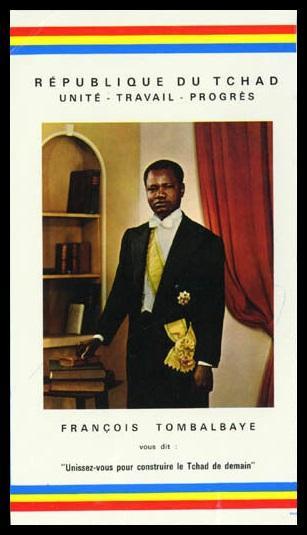
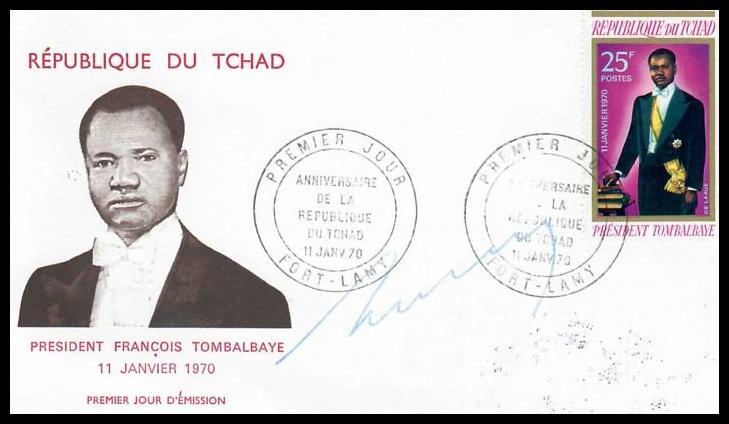
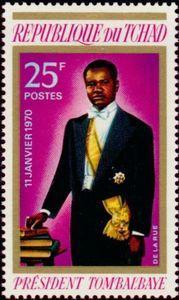
Yours sincerely,
No one
0 -
Dear Gentlemen,
Presentation of the insignia of Workshops Base Store 10-188*, Technical Means 10-188** and Support Squadron of Technical Supplies 2C-188*** in Djibouti:
*Atelier Magasin de Base 10-188 / AMB 10-188 (CFS)
**Moyens Techniques 10-188 / MT 10-188 (TFAI / early Rep.Djibouti) (I'm not sure if my English translation is correct)
***Escadron de Soutien du Ravitaillement Technique 2C-188 / ESRT 2C-188 (Rep.Djibouti)
- the insignia for the three units is the same, homologation Air A .835 1961:
- AMB 10-188 // MT 10-188 Drago:
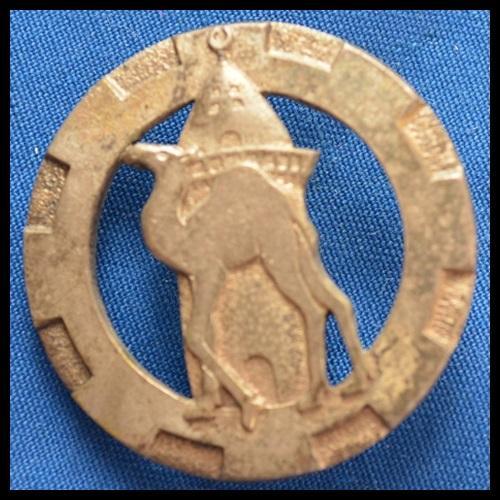

- MT 10-188 Drago:
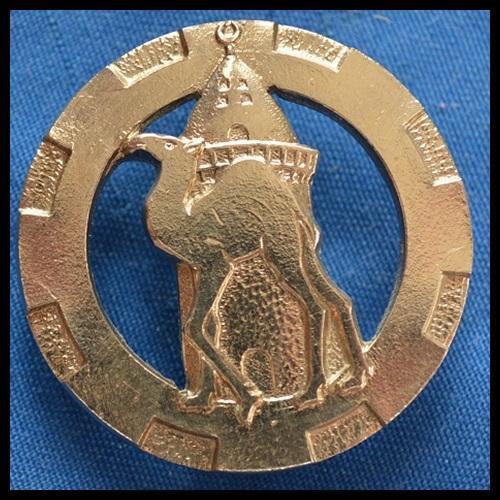
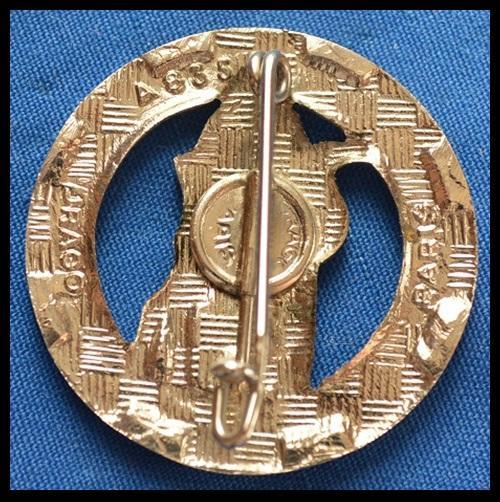
- MT 10-188 // ESRT 2C-188 Drago Noisiel Marne-la-Vallee:
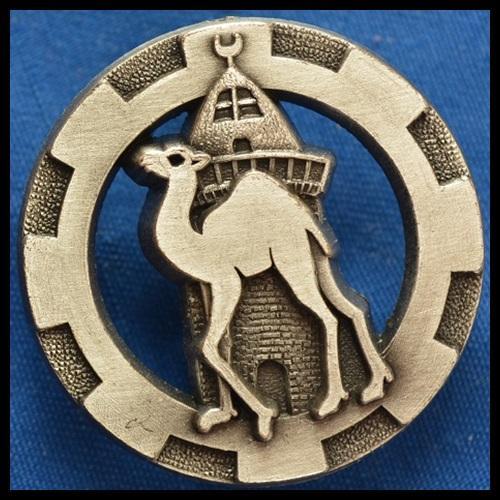
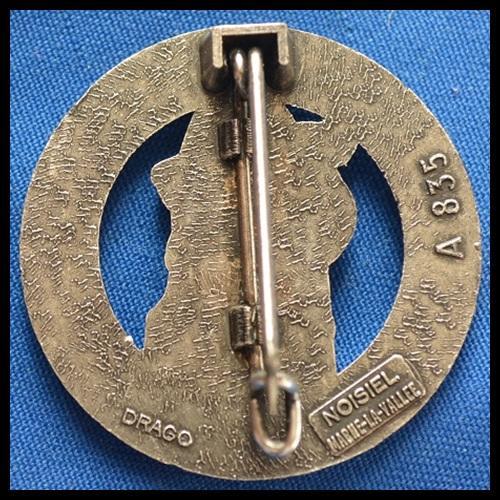
The patches:
- MT 10-188:

- ESRT 2C-188 'Escadron de Soutien du Ravitaillement Technique 2C-188 Djibouti «de jour de nuit la logistique suit / night day the logistics follows»'
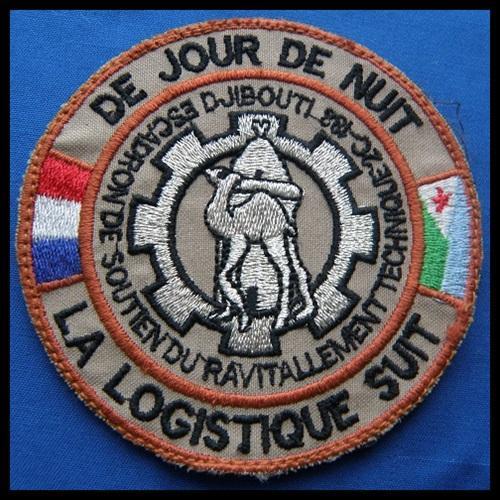
- key ring:
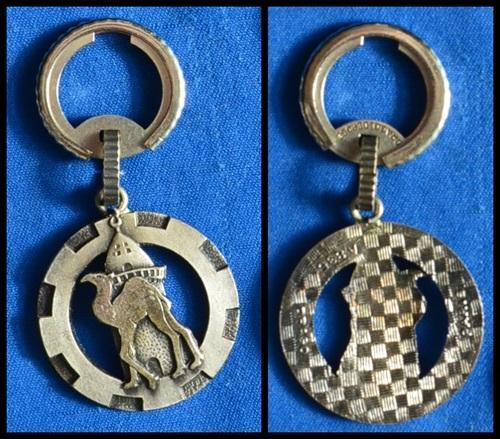
Yours sincerely,
No one
1 -
Dear Gentlemen,
Lieutenant François Boigne (-de)
French nationality
Licensed as a military pilot on 25 August 1916 (licence n°4340)
N 82 Squadron and SPA 69
Born on 18/08/1896 in Noyon (Oise)
Died on 23/08/1970 in Neuilly (Hauts-de-Seine) (Natural death.)
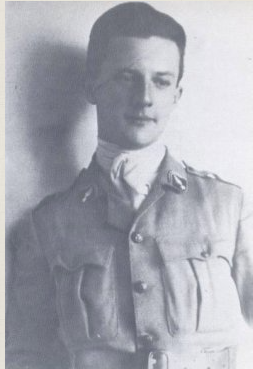
Here is a short biography in English of François de Boigne - Wikipedia
And this one: SOURCES Dossier individuel SHD n°1P 20131/2
Translation google:
"François, Eugène, Marie, Antoine de Boigne was born in Noyon, in the Oise, on August 18, 1896. Contrary to appearances, it was in Savoy, in the city of Chambéry, that his family ties were located: he came from an illustrious family of the nobility of the department, having given generations of notables, the founder of the "dynasty" being Benoist Le Borgne (1751-1830), who became Benoît Le Boigne, an adventurer who made his fortune in India and became a monarchist supporter showered with honours by Louis XVIII. His grandson, Charles Marie Ernest de Boigne (1829-1895) became deputy and mayor of Chambéry and had a son, Elzéar de Boigne, who decided to make a career in the army. Married to the daughter of a count, Mademoiselle Hélène de Mandat de Grancey, he was a lieutenant of cavalry in the 9th cuirassiers of Noyon when François was born. But he was killed in a fall from his horse in 1902 and the young boy was raised with his younger brother by his mother known as the Countess Elzéar de Boigne, who lived at the Château du Buisson-rond in Chambéry and who remained very active in the social life of the time, the press reporting all his trips on holiday including the monarchist daily L'Action Française, to which she is a loyal subscriber. She makes sure to provide a careful education for her children.
When the war broke out in August 1914, François was an 18-year-old student who had not yet fulfilled his military obligations and was not yet eligible for mobilization. He nevertheless decided to enlist voluntarily to participate in the fighting, going to the recruitment office of the Chambéry City Hall on November 11, 1914, with his mother's authorization. He was then incorporated as a private 2nd class in the 9th Hussar Regiment where he attended his classes and remained assigned to the depot of his regiment for several months where he received his brigadier's stripes in March 1915. It was not until 27 May 1915 that he left for the front to join the bulk of his regiment then assigned as a second-line unit in the trenches in Champagne – several detachments taking part in the attack on Champagne in September 1915, before finding themselves assigned to a quiet sector of the front near Montbéliard, near Belfort. The attack on Verdun sent the 9th Hussars to the sector where it was only used to police behind the lines. Throughout this period, Brigadier de Boigne served in the 2nd squadron of the regiment, more to fight boredom than the enemy, if we are to believe the register of punishments where he collected nearly 40 days of accumulated instruction for various acts of negligence in garrison life or acts of bad temper towards his superiors.
He then volunteered to join the aeronautical service and was accepted as a student pilot in June 1916, reaching the flying schools from which he graduated and assigned to the N 82 squadron on January 2, 1917. The unit was then stationed on the Fontaine airfield near Belfort, in a sector of the front that was reputed to be rather calm. It remained there until April 1917, when the unit was assigned to the Bonnemaison (Lhéry) airfield in Champagne to take part in the air offensive following the attack on the Chemin des Dames, where the air battles took on a completely different scale. It was there that Brigadier François de Boigne obtained his first aerial victory at the controls of his Nieuport, on 3 May 1917, by shooting down an enemy aircraft that fell into the French lines with his squadron leader Captain Echard. Mentioned and promoted to the rank of Marshal of Logs, he remained in this sector with his squadron until 4 November 1917, when it flew to Italy.
Following the defeat at Caporetto, the Italian army began a chaotic retreat to the west and was only able to recover along the Piave River, at the cost of abandoning much of its heavy equipment, including half of its aircraft, with its strength falling to 200 aircraft in the line. The N 82 squadron was then sent to the other side of the Alps to rescue the Italian ally, along with several other army corps squadrons, and another fighter squadron, the SPA 69. The Nieuport 27s of the N 82 squadron were recognized by the head of the French air force in Italy as inferior aircraft to German aircraft. But the enemy facing the French on this front was the Austrian air force, whose equipment was far from being up to that of its German ally, which allowed the French pilots of the N 82 to face the enemy on an equal footing. Installed in Verona on 4 November 1917, the N 82 had more to risk from the winter weather and the configuration of the front, made up of mountains, than from the action of the enemy air force. Most of the losses come from pilots crashing in the wild following a mechanical failure, and having no flat ground to land... For the Marshal of the Lodges François de Boigne, the skies over Italy will be synonymous with success. He was promoted to the rank of second lieutenant on 26 January 1918 and the following month, on 24 February 1918, he won a "double" by shooting down two Austrian aircraft obtained in collaboration with Captain Echard – one falling on Monte Paole, the other north of Possagno. This new exploit earned him a citation in the order of the army on 28 March and the bronze medal of Italian military valor. On 23 March 1918, he again claimed an aircraft that fell on the town of Montebello but which was not approved for him, then, on 25 March 1918, a two-seater fell under fire north of Montebelluna which was approved for him in collaboration with Sergeant Bolland, his 4th victory as specified in his new citation in the order of the army dated 21 May 1918. With his three sure victories and one probable, he is the best French fighter pilot in Italy. His successes were hailed by Commander Houdemon, head of the French military aeronautical mission, who noted the impetuous side of his 21-year-old pilot, whom he considered to be "very young in character and not very serious. »
Returning to France on 10 April 1918 in Etampes, he immediately left for the front in the Oise with the N 82, re-equipped with SPAD fighters, to try to contain the German offensive launched on the sector in the hope of obtaining a decisive victory before the arrival of the American troops. It was there that he obtained his last successes: he shot down a fighter on Craonne with two crew members on 27 May 1918, which earned him a new citation on 16 June 1918. His last approved victory was obtained alone, on 19 July 1918. Transferred to the SPA 69 squadron on 16 September 1918, he ended the war in Lorraine with a final score of 6 approved victories and two probable.
Staying a few more months in the squadron, he was demobilized on July 17, 1919, and returned to civilian life. He retired to the family castle of Le Buisson-Rond in Chambéry and had to think about his reconversion. To do this, he followed the path of his distant ancestor who had gone on an adventure in India: in 1926 he became a flight instructor in China at Shantung, where he opened an aviation school at the request of the local warlord and where he added nearly 400 hours to his flight logbook.
Returning to France after 1932, he found a job in the sales department of the Bugatti factory in Molsheim, being intimate with the management of the company since he frequented the daughter of the famous Italian manufacturer, Miss Lidia Bugatti, whom he married on March 11, 1940 in the presence of many personalities.
When the Second World War broke out, he was again mobilized with his rank of lieutenant: having completely neglected his periods of training in the reserves, he was promoted to this rank in 1924 and received no further promotion. As soon as he was mobilized, he obtained a special assignment at the request of his management to the Bugatti factory in Molsheim, which was retreating to Bordeaux. His special assignment was not renewed and on May 16, 1940 he was assigned to the Tours air base, to the air battalion n°109.
Demobilized after the debacle, he retired to Chambéry at Le Buisson-Rond and no details are known about his action during the occupation, as he was not a member of the resistance or collaboration. The Air Force struck him off the list on 18 August 1948 once he had reached the age limit for his rank. Active in social life and frequenting the Kennedy brothers in the 1950s, he died on August 23, 1970 at the American Hospital in Neuilly."
Yours sincerely,
No one
2 -
Dear gentlemen,
Reading about the life of Lt. Colonel J. WADDELL here:
I came across this picture "Lieutenant Francois de Boigne N82 et SPA 69":


Yours sincerely,
No one
1 -
Dear Gentlemen,
The Fire Safety and Rescue Section* & Fire Safety and Rescue Squadron** in Djibouti.
*Section de sécurité incendie et de sauvetage / SSIS
**'Escadron de Sécurité Incendie et de Sauvetage / ESIS
The Fire Safety and Rescue Section / Squadron is an operational unit located at an Air Base.
This unit is mainly responsible for emergency rescue missions (rescues, firefighting, etc.).
Operational missions:
- Fire safety and rescue ("Crash Fire and Rescue" mission) for the benefit of the air base's aeronautical activity;
- Protection of Airport Facilities ("PIAP" mission);
- Rescue of people (in support of the army medical centre for most of the bases);
- Nuclear safety, for the benefit of the French nuclear deterrent activity;
- Specialized CBRN defence (nuclear, radiological, biological and chemical) and technological risks (RT);
- Various operations: animal risks, natural risks (forest fires, floods, storms, etc.).
The insignia:
- SSIS DA 188 Y. Delsart 89100 Sens:


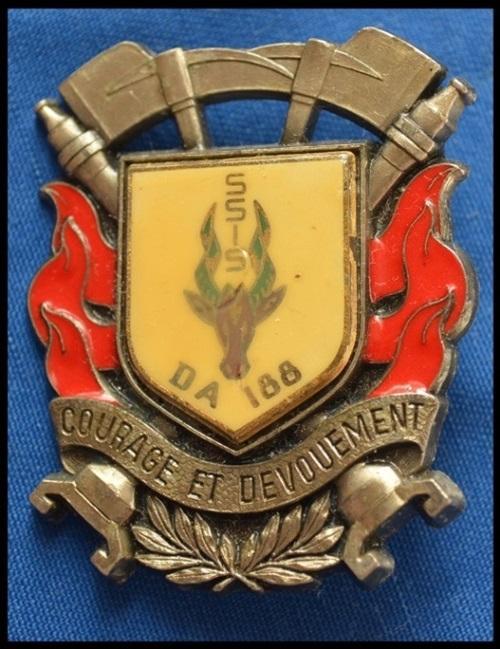
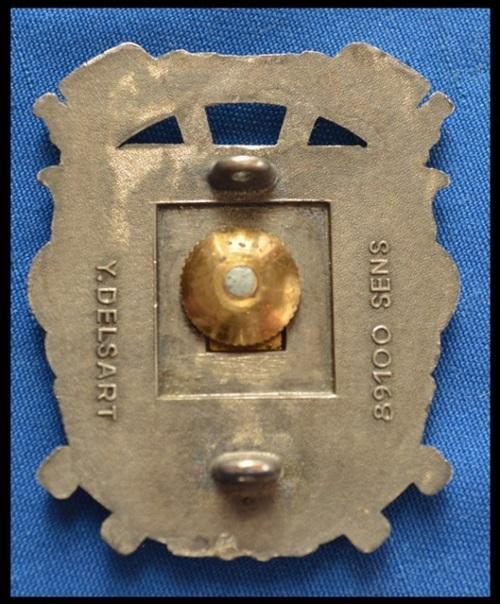
The patches:
- ESIS 1H188 :
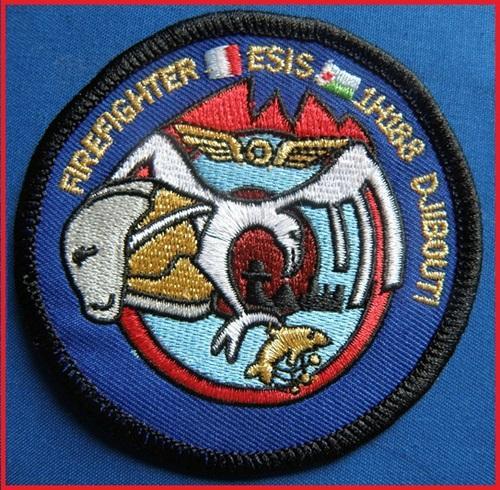
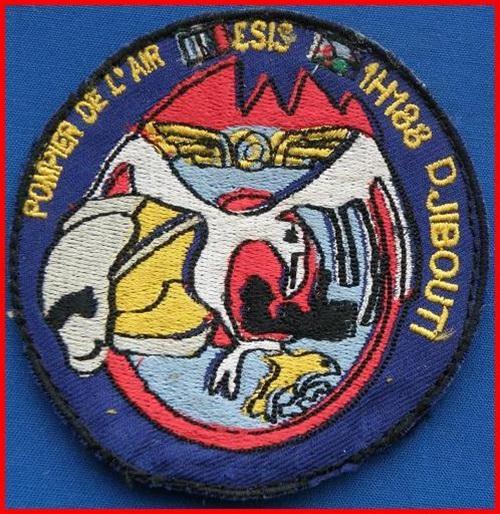
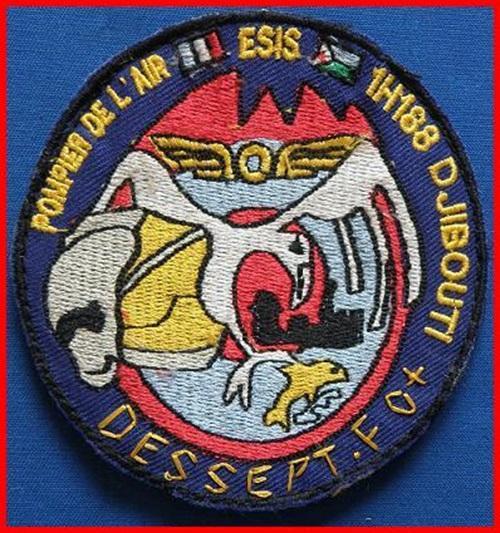
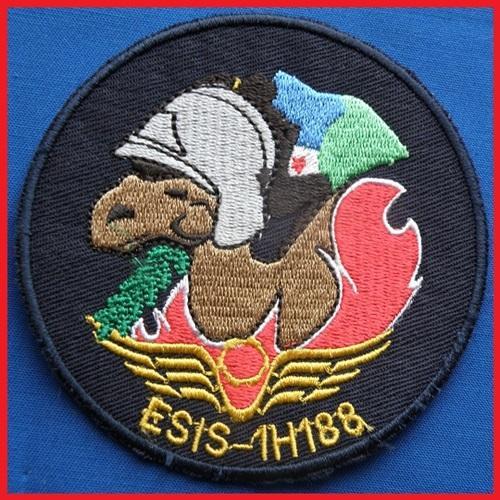
- ESIS 1H188 pompier de l'air / ALAT:

ESIS 1H188 FR.- Fire & Rescue Camp Lemonnier Djibouti 2012:
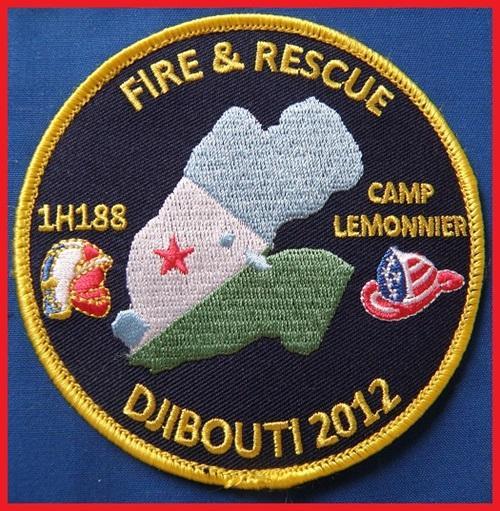
- Pompiers FFDJ - CLDJ FD :

Yours sincerely,
No one
0 -
Dear Gentlemen,
Presentation of the insignia of the Ground-Air Defense Section 39-950* in Djibouti**:
*Section de Défense Sol-Air 39-950 (S.D.S.A. 39-950) homologation Air 1259 1993
**the only one in a foreign country
- S.D.S.A 39-950 Arthus-Bertrand Paris:
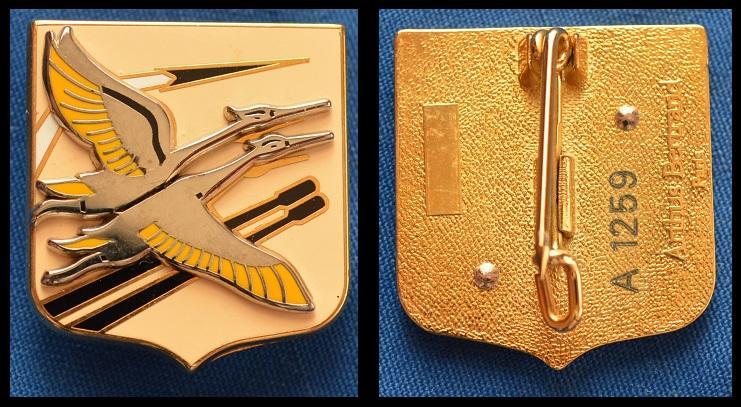
Note: There are 11 more Ground-Air Defense Sections that have the same insignia, but the background colour differs.
- Section de défense sol-air 20/950 - Dijon A 1250
- Section de défense sol-air 21/950 - Reims A 1251
- Section de défense sol-air 22/950 - Metz A 1252
- Section de défense sol-air 24/950 - Evreux A 1253
- Section de défense sol-air 26/950 - Tours A 1254
- Section de défense sol-air 32/950 - Cazaux A 1255
- Section de défense sol-air 33/950 - Cognac A 1256
- Section de défense sol-air 37/950 - Nice A 1257
- Section de défense sol-air 38/950 - Narbonne A 1258
- Section de défense sol-air 25/950 - Orléans-Bricy (Non homologué)
- Section de défense sol-air xx/950 - Toulouse-Francazal (Non homologué / unit never formed)
The gun: LE BITUBE (centerblog.net)
- screenshot:

Yours sincerely,
No one
0 -
Dear Gentlemen,
The Operational Armament Mechanic is one of the specialties of the French Air Force.
The Operational Armament speciality is the speciality that consists of the implementation and maintenance of the Air Force's armaments.
Some gunsmiths can also become EOD (Explosive Ordnance Disposal).
There is a term that is more used (unofficial but very widely used) in the French Air Force to designate armorers:
Pétaf (Pyro-Électro-Technicien des Armements et des Fusées / Pyro-Electro-Technician of Armaments and Rockets).
The old name of the gunsmiths was "PétaFEU" for PETard and FUsée specialist. Which gave Pétaf.
Presentation of the patches:
- Red Sea Pétaf:
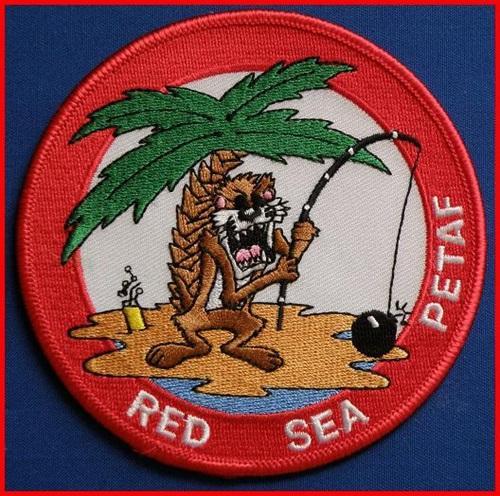
- Pétaf:
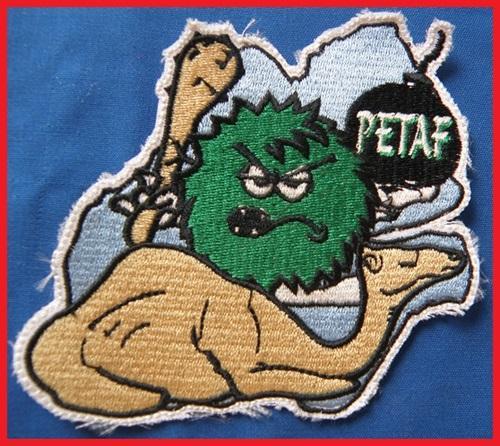
- NEDEX (Neutralisation, Enlèvement et Destruction des EXplosifs / neutralization, removal and destruction of explosives or Explosive Ordnance Disposal EOD)
- Equipe NEDEX F.F.D.J. DA 188 Djibouti:
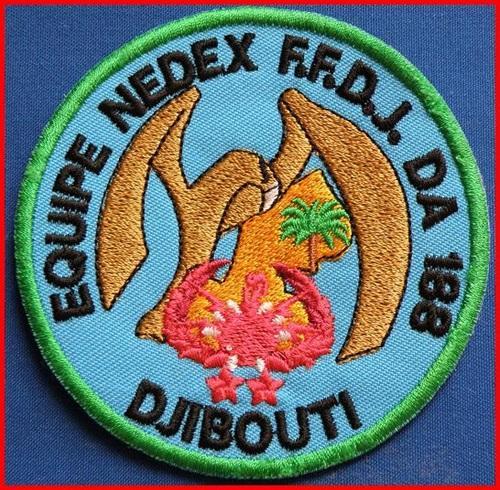
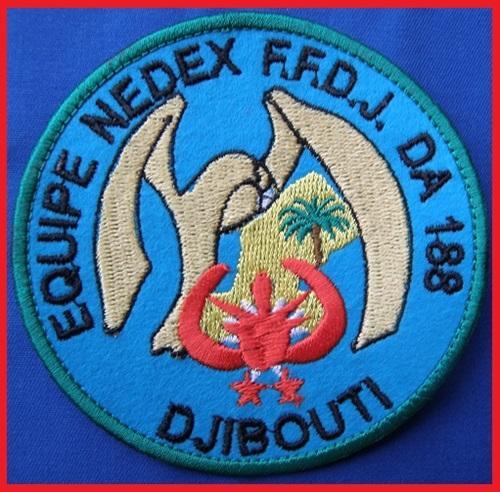

- GRIN (Groupe Régional d'Intervention NEDEX / EOD Regional Intervention Group)
- GRIN 6 Djibouti EOD / BCM / IEDD:
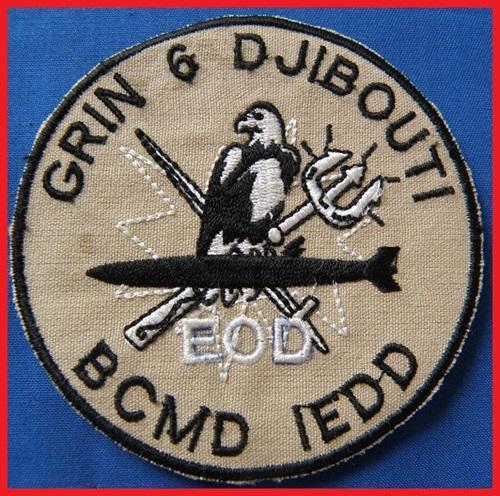
- EOD: Explosive Ordnance Disposal (EOD) / Neutralisation, Enlèvement et Destruction des EXplosifs (NEDEX), NATO standard
- BCMD: « Biological and Chemical Munition Disposal » (BCMD) / Intervention sur Munitions Spéciales (IMS), NATO standard
- IEDD: « Improvised Explosive Device Disposal » (IEDD) / Intervention sur Engins Explosifs Improvisés (IEEI), NATO standard
Yours sincerely,
No one
0 -
Dear Gentlemen,
The same question?
Same answer:
Yours sincerely,
No one
0 -
Dear Gentlemen,
The Fusilier Commandos of the Air Force (Fusiliers Commandos de l'Air) are airmen armed and trained as infantry, who provide ground defense of air bases and secure forward base areas.
They also participate in forward air control, combat search and rescue missions, and as air assault ground soldiers.
They were formed between September 1955 and June 1956.
Presentation of the patches of Protection Section 42-188* and Protection Squadron 1G.188** in Djibouti:
*Section de Protection 42-188
**Escadron de Protection 1G.188
- Section de Protection 42-188:
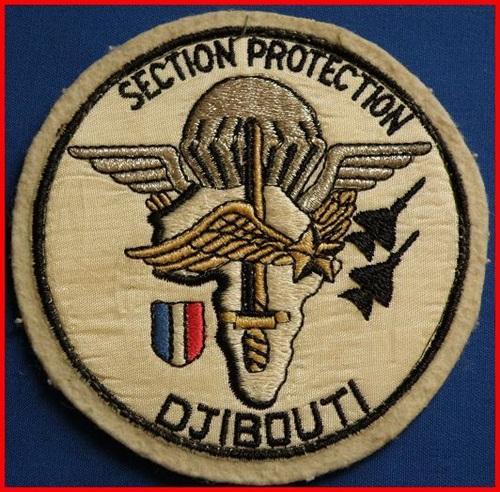
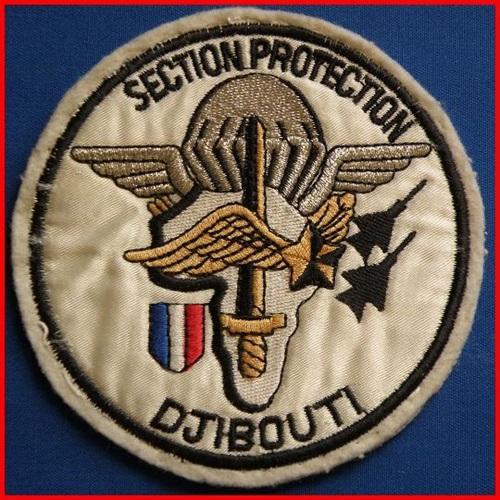
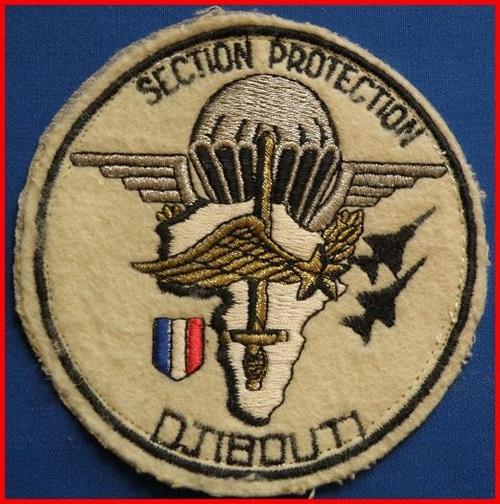
- Escadron de Protection 1G.188:
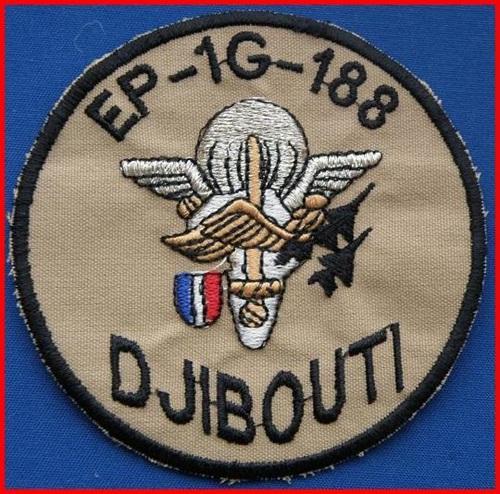

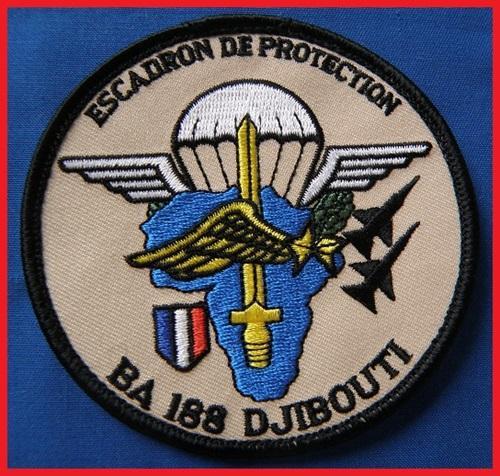
Les insignes desFusiliers Commandos de l'Air:
- Beret homologation Air 688 1956 Drago Paris:

- The chest insignia* "Sicut aquila"** homologation Air A 690 1956 Drago Paris:
*inspired by the insignia of the Polish paratroopers' beret
**"Tel Aigle" / "Like the Eagle"
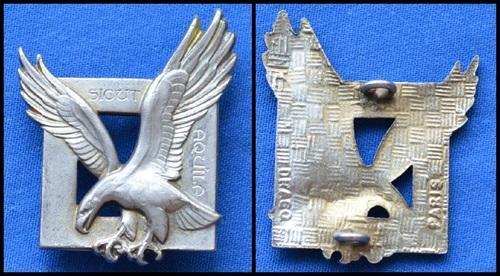
Yours sincerely,
No one
0 -
Dear Gentlemen,
3/11 "Corse" Fighter Squadron* in Irak.
*Escadron de Chasse 3/11 "Corse**" / EC 3/11 "Corse"
**Corsica or l’île de Beauté / Isle of Beauty
“Operation Chammal” which began on September 19, 2014 is still ongoing (9 years, 8 months to this day).
This operation is French and aims to support Iraqi forces against the Islamic State.
In 2015 it extended to Syria to neutralize its training camps.Note: "chammal" is the name of a northen wind in Iraq.
Presentation of the EC 3/11 "Corse" patches:
- 2014:
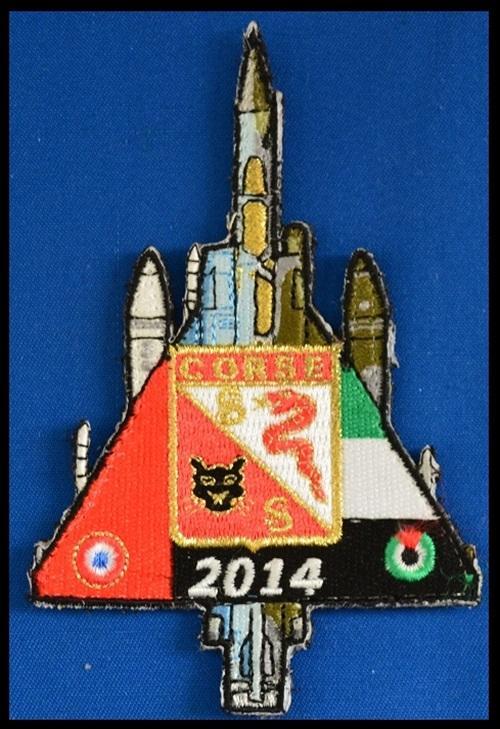
- 2015:
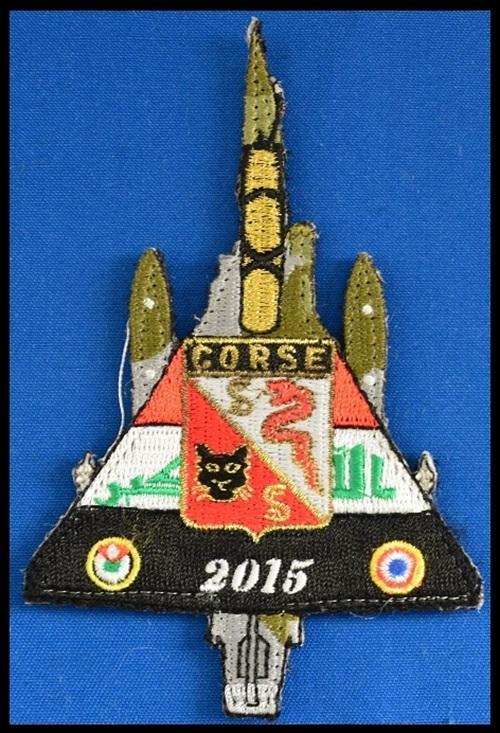
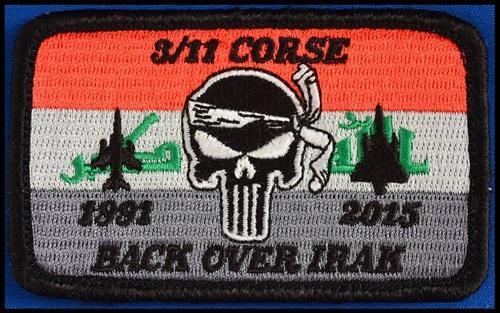
- with EC Ardennes / Navarre / Corse / Champagne / Argonne:
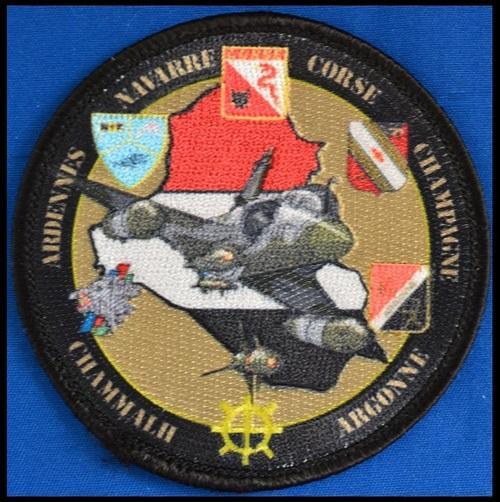
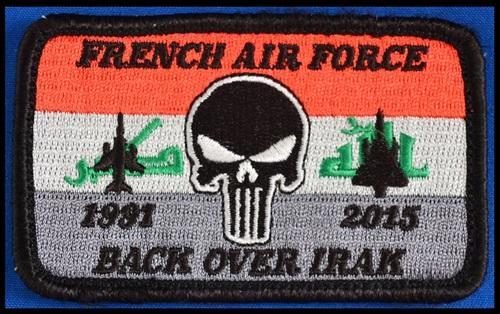
- Rage:

Yours sincerely,
No one
0 -
Dear Gentlemen,
3/11 "Corse" Fighter Squadron* in Saudi Arabia.
*Escadron de Chasse 3/11 "Corse**" / EC 3/11 "Corse"
**Corsica or l’île de Beauté / Isle of Beauty
This “Green Shield 2012” exercise took place from January 11 to 25, 2012 at Tabuk air base, in western Saudi Arabia. It was a Franco-Saudi exercise.
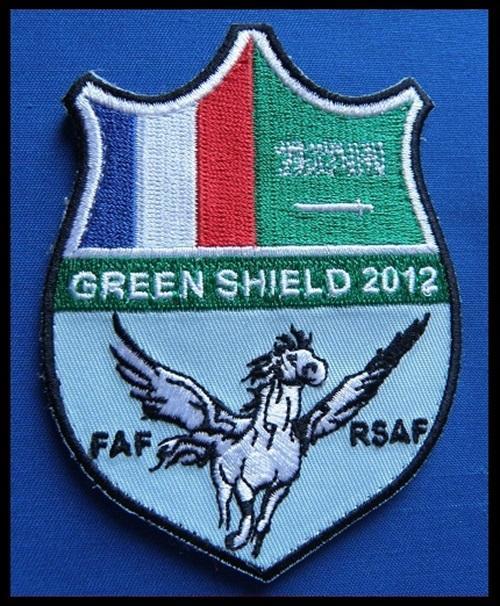
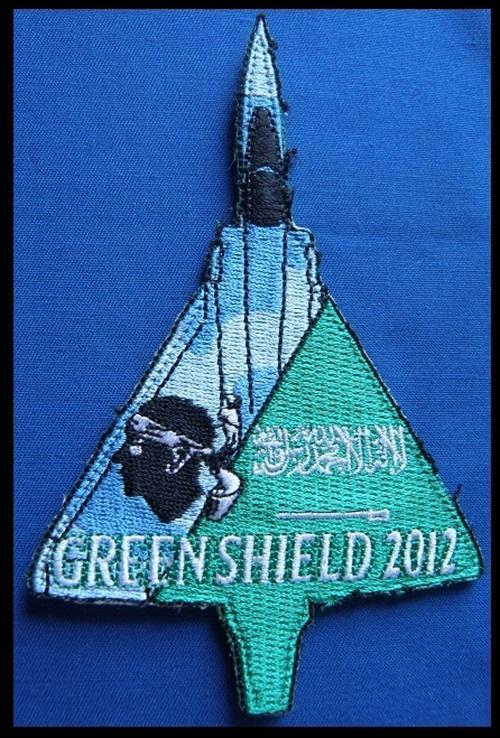

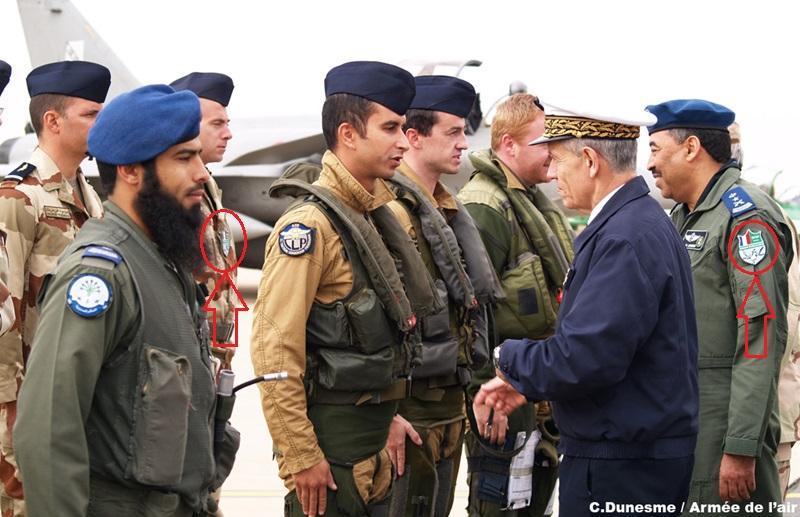
- 1944 map:
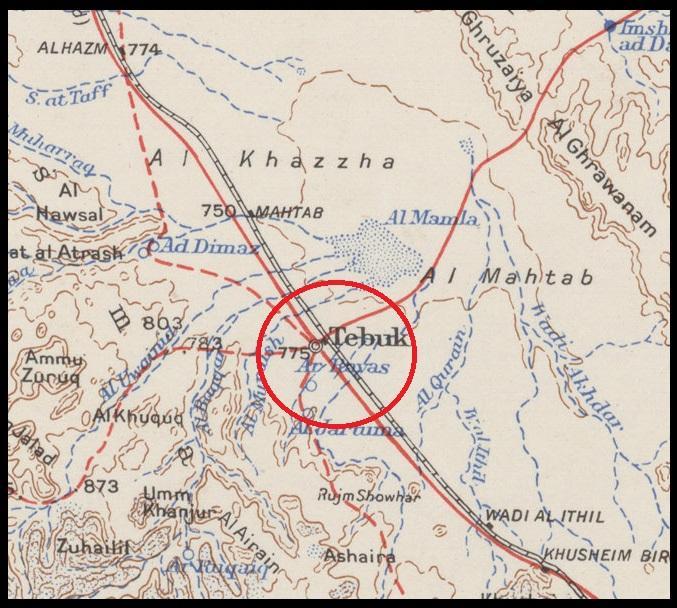
- 1981 Operational Navigation Chart Series:
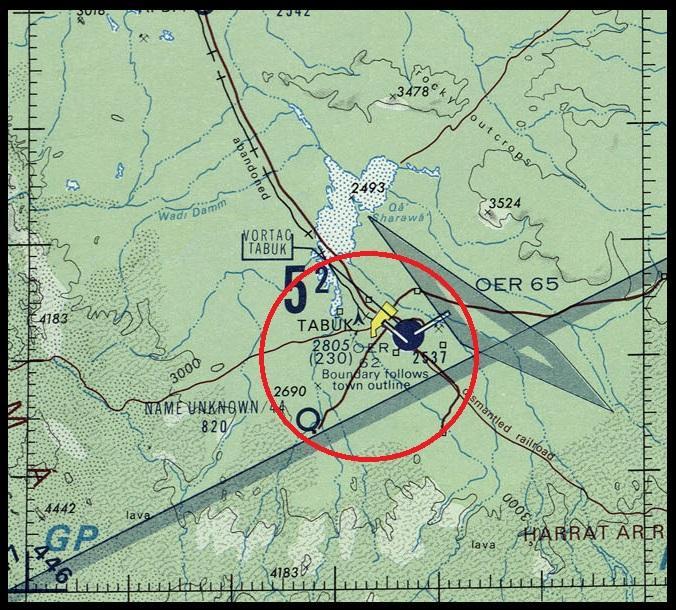
Yours sincerely,
No one
1 -
Dear Gentlemen,
Miscellaneous:
Here in English with great pictures: Inside France's small but mighty force in Djibouti (key.aero)
A video where one can see the patches:
- Squadron insignia (this is an earlier insignia it will get the homologation Air A.1066 1976) Drago Paris:

- challenge coins:
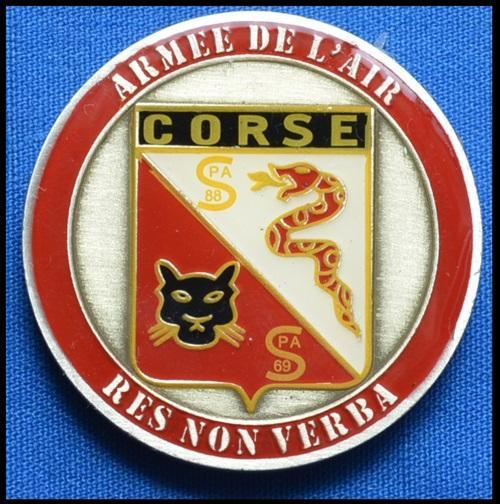


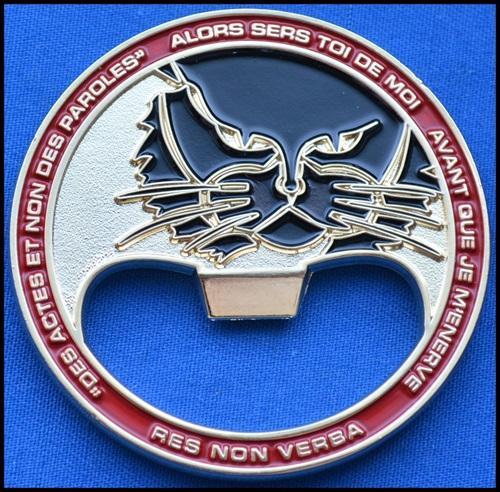
- key ring:
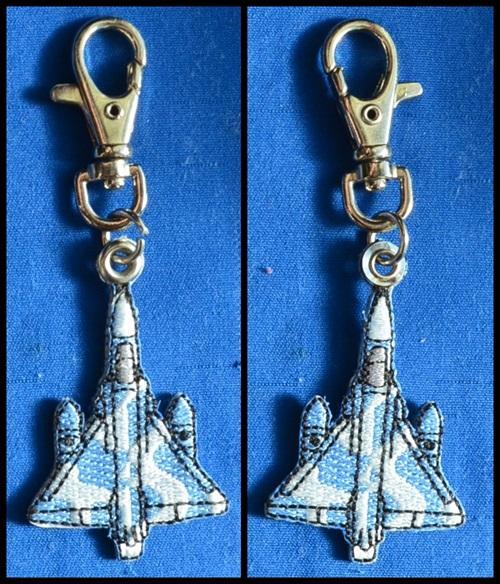
- stickers:
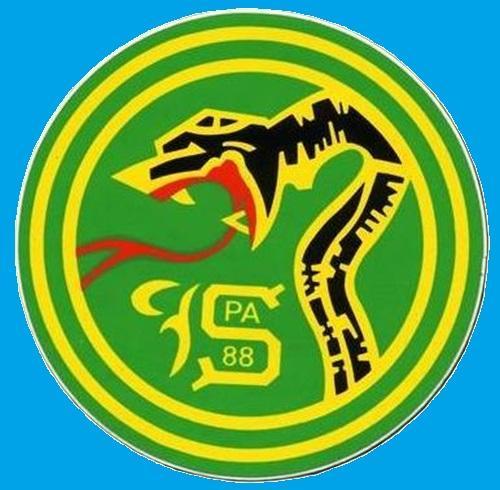

Yours sincerely,
No one
0 -
Dear Gentlemen,
The patches:
- EC 3/11 "Corse":
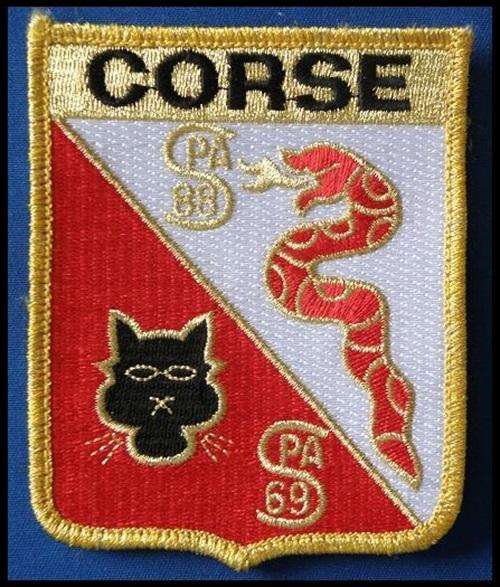
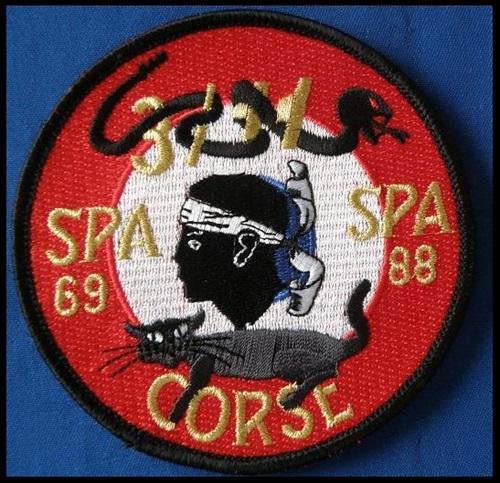
- EC 3/11 "Corse" 1943-2013 / 70th Anniversary :
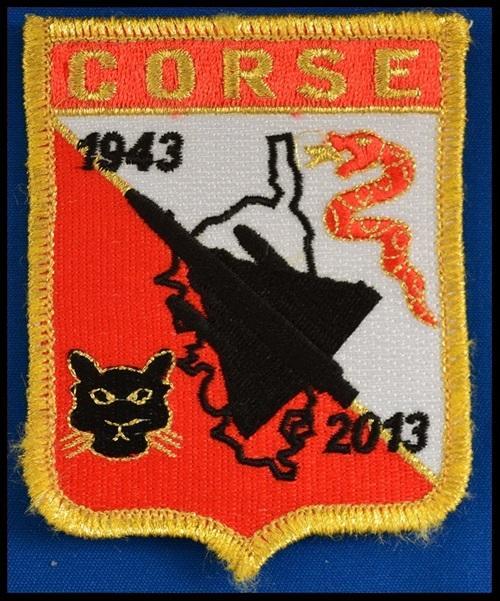
- EC 3/11 "Corse" FRANCE:

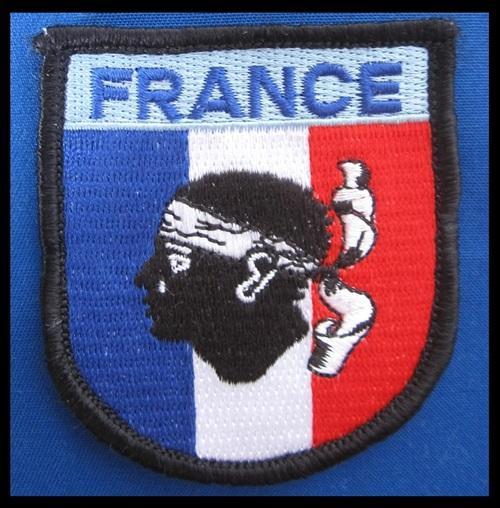

- SPA 88 1e Escadrille 2008:
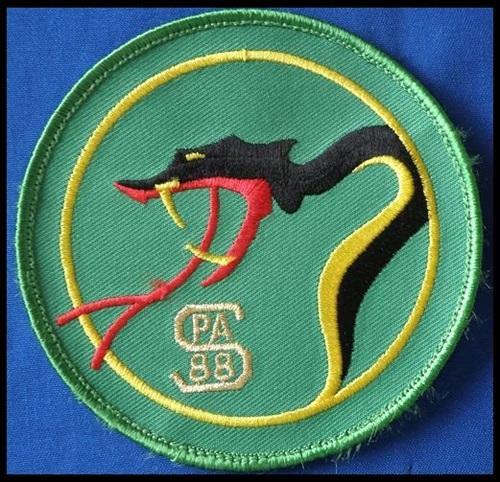
- SPA 88 1e Escadrille 2013:

- SPA 69 2e Escadrille 2008:
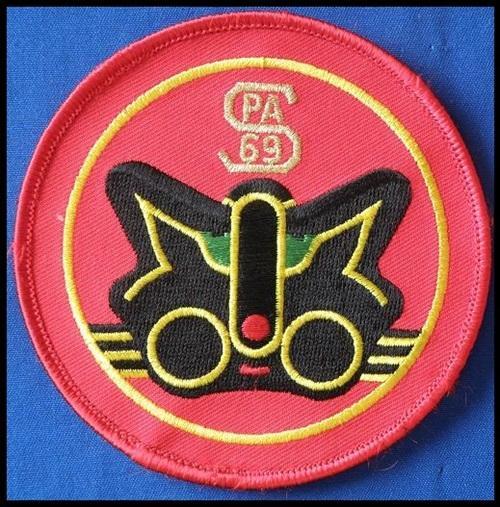
- SPA 69 2e Escadrille 2013:
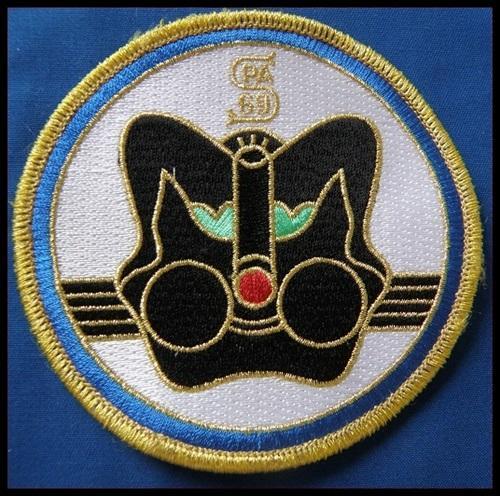
For the next three I don't know what they are for.
- The Naineken could be for 5 000 hours of flight:
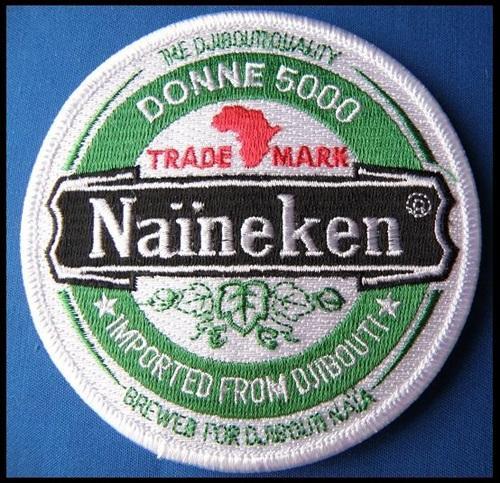
- The Nai-Phone:
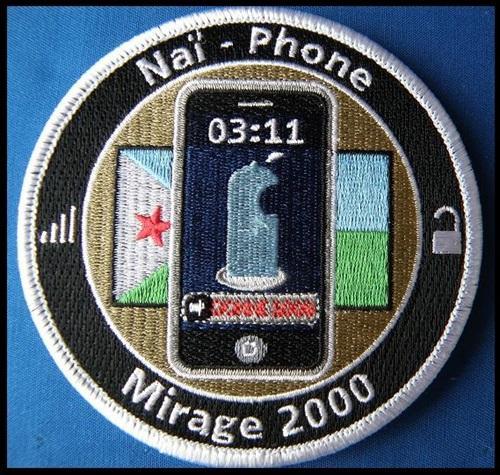
- SPA 69 Djibouti since 2008:
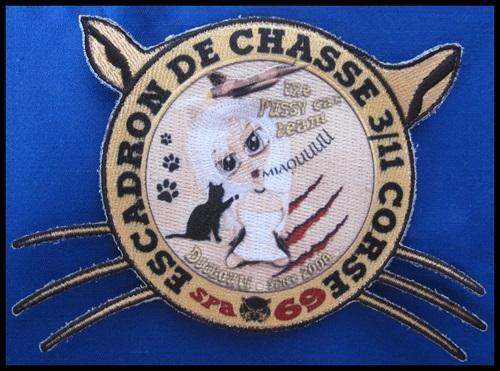
- The planes:
- Mirage 2000 C :
- Operational permanence 2009 Mirage 2000 C :
- Mirage 2000 D :
- Mirage 2000 F5 (not sure 100%):
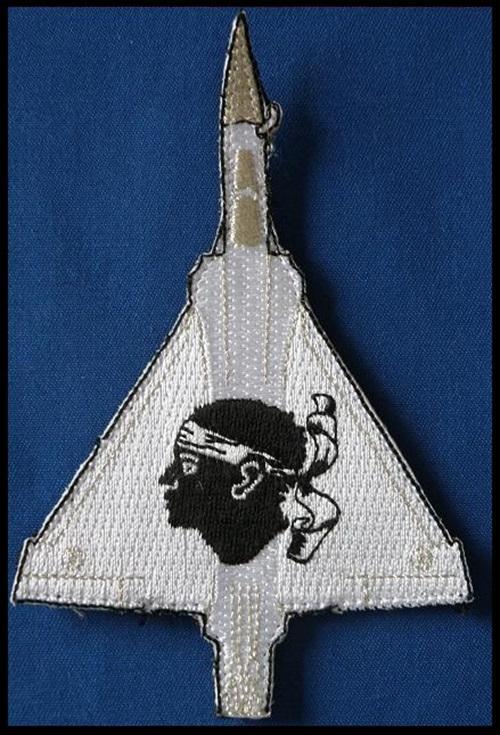
- When the Mirages 2000 F5 arrived to replace the 2000 C (I think):
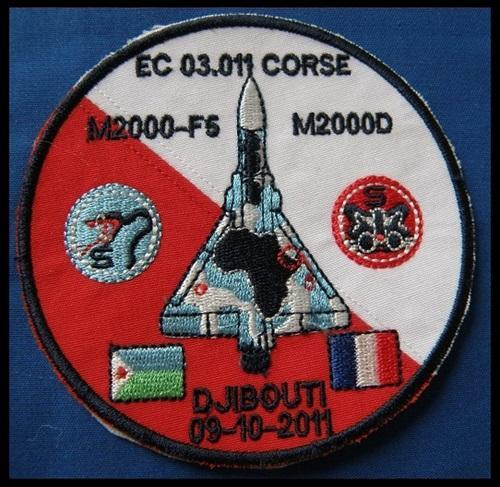
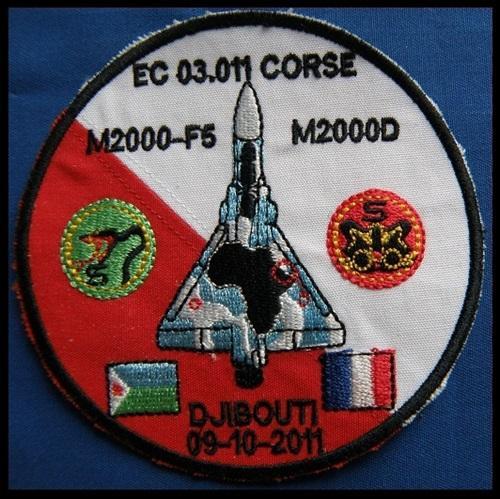
- Bye-Bye 2000 D :
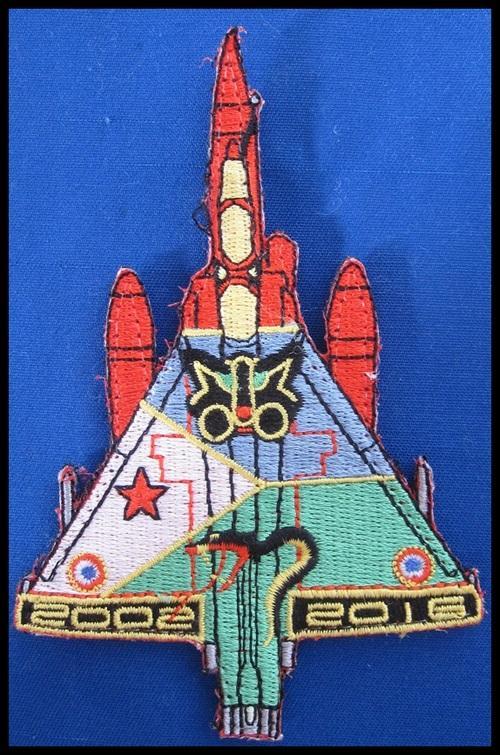
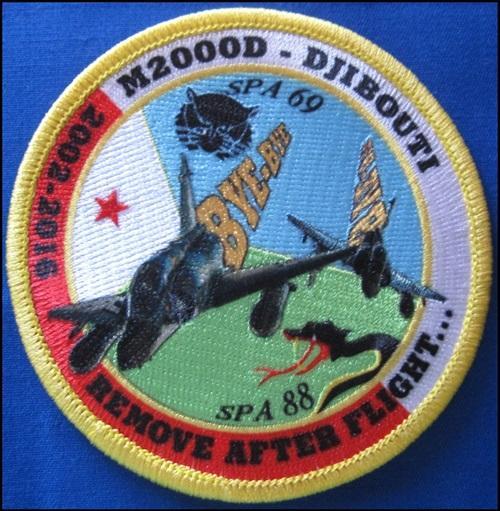
- Hellcat?:

- 1st Canon shooting campaign for Mirage 2000 5:
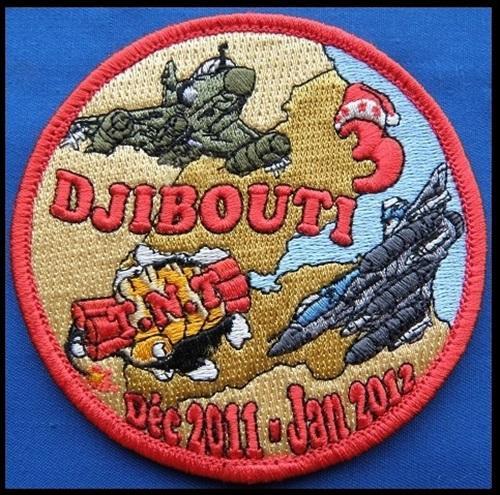
- Guns are ready May 2013?:
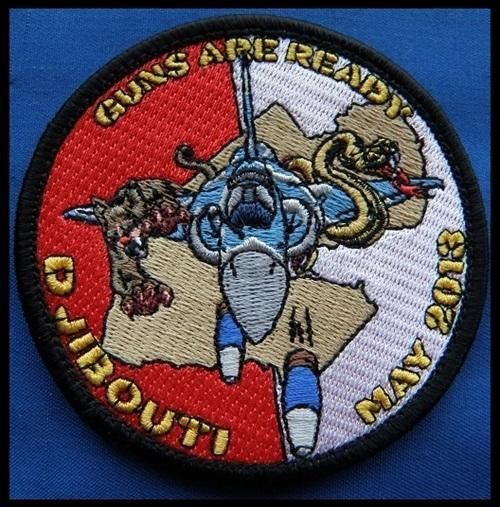
Yours sincerely,
No one
1 -
Dear dpk,
Thank you for sharing this nice story.
Yours sincerely,
No one
0 -
Dear Gentlemen,
3/11 "Corse" Fighter Squadron* in Djibouti.
*Escadron de Chasse 3/11 "Corse**" / EC 3/11 "Corse"
**Corsica or l’île de Beauté / Isle of Beauty
History:
Fighter Group I/3 was created in September 1933 and took up the traditions of the SPA 69 and SPA 88 squadrons.
During the six weeks of the French Campaign, the group won 52 victories.
On June 18, the unit left France to take refuge in Tunisia then settled in August, stably, in Oran, until November 30, 1941, the date of the group's dissolution.
The GC I/3 was reborn on January 1, 1943 and actively participated in the Italian campaign.
In the fall of 1944, the group entered the Rhône valley, reaching Lyon, Dijon, Luxeuil, Strasbourg then Germany.
At the time of capitulation, the 1/3 had won 108 victories and received 190 citations.
He received the name "Corse" (Corsica) because of the important part he played in the liberation of the "Isle of Beauty" and acquired the right to wear the fourragère of the Croix de Guerre 1939-1945.
After, it participated in the Indochina War, Suez Canal Crisis, Algerian War, Western Sahara War, Gulf War, and Bosnia and Herzegovina War.
On November 3, 2008, EC 3/11 Corsica replaced Fighter Squadron 4/33 Vexin on air base 188 Djibouti.
It is on the date, symbolic for "Corsica", of 03/11/2018 that the ceremony to recreate the squadron with the SPA69 and SPA88 takes place in Djibouti.
To fulfill its DA and conventional assault missions, the squadron then has seven Mirage 2000C RDIs and three Mirage 2000Ds.
On August 31, 2011, the Mirage 2000C RDIs were replaced by four Mirage 2000-5Fs.
The 70th anniversary of the “Corsica” appellation is celebrated on January 11, 2014 in Djibouti.
On this occasion, the Mirages briefly sported a shark's mouth, inherited from the F-100s of the 4/11 "Jura" of 1978.
The Mirage 2000-5F, number 57 registered 188-ET, also received a special anniversary decoration. On June 1, 2016, the M2000D withdrawal ceremony took place, the last two of which left Djibouti on June 16.
The format of the squadron is adapted and its mission is refocused on its air policing mission in Djiboutian airspace.
Operating in a joint and international context, the squadron participates in numerous exercises with allied forces.
A prepositioned force, the EC 3/11 “Corsica” provides the French authorities with a reactive and effective intervention capacity while ensuring a mission of hardening the crews of the Air and Space Force*, and also personnel from other armies.(written by CROCHARD Jean-Luc / translation Google)
*Air and Space Force / Armée de l'air et de l'espace since September 11, 2020 it's the new name of the Armée de l'air / French Air Force
For pictures, videos and recent history see: Escadron de Chasse 3/11 Corse | Djibouti | Facebook
- Squadron insignia homologation Air A.1066 1976:
- EC 3/11 "Corse" A.P.S. :


- miniature:
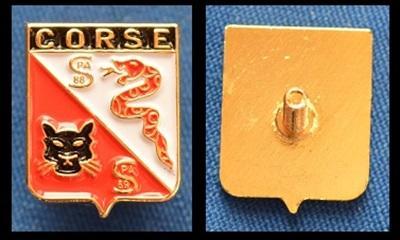
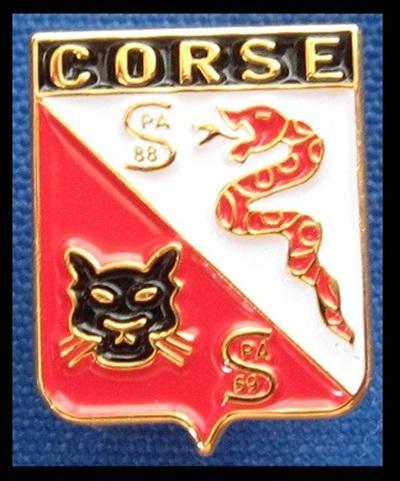
- pin's:
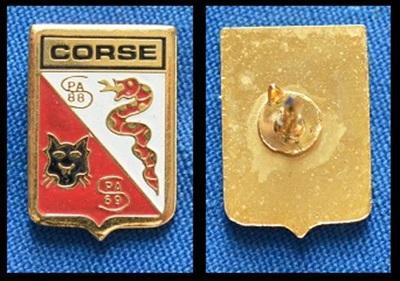
- Flights / Escadrilles
SPA 88 “THE SNAKE”
SPA 88 has its origins on May 6, 2017 in Belfort-Chaux (90) during the First World War, first on Nieuport 17, 23 and 24 before becoming SPA 88 passing on SPAD VII and XIII on September 25 1917. Its traditions were then taken up, sometimes with short interruptions, by various escadrilles: the 105th escadrille of the 3rd RAC from January 1920, the 5th escadrille of the 3rd RAC in August 1920, the 1st escadrille of the GC I/3 from September 1933 to November 1941 , the 1st escadrille of GC I/3 “Corsica” from January 1943 to July 1947, the 1st escadrille of GC 1/6 “Corsica” from July 1947 to April 1952, then the 1st escadrille of EC 1/1 “Corsica » from April 1952 to June 28, 1966, finally the 1st escadrille of EC 3/11 “Corsica” from April 1966 to June 1997. It was finally reborn in Djibouti as the 1st escadrille of EC 3/11 “ Corsica” from November 3, 2008 to the present.(written by CROCHARD Jean-Luc / translation Google)- SPA 88 1e Escadrille (this is an earlier insignia it will get the homologation Air 1108 in 1971) Augis Lyon :

- SPA 88 1e Escadrille homologation Air 1108 in 1971 Drago :

SPA 69 “CAT’S HEAD”
SPA 69 has its origins on September 20, 1915 in Lyon-Bron (69) during the First World War, first on Nieuport 10 before becoming SPA 88 passing on SPAD VII and XIII in November 1917. Its traditions are then taken up sometimes with short interruptions by various escadrilles: the 2nd escadrille of GC I/3 from September 1933 to July 1947, the 2nd escadrille of GC I/6 “Corsica” until April 1952, then the 2nd escadrille of GC 1 /1 “Corsica” until February 1966, finally the 2nd escadrille of the 3/11 “Corsica” from April 1966 to July 27, 1997. It was finally reborn in Djibouti as the 2nd escadrille of the EC 3/11 “Corsica” » from November 3, 2008 to the present.(written by CROCHARD Jean-Luc / translation Google)- SPA 69 2e Escadrille Augis (this is an earlier insignia it will get the homologation Air 1109 in 1971):

- miniature:

- 3/11 Corsica fourragères:
- fourragère in the colors of the Croix de Guerre 1914-1918 with olive in the colors of the Croix de Guerre 1939-1945
- fourragère in the colors of the Croix de guerre des théâtres d'opérations extérieurs (TOE / War Cross for foreign operational theatres)* & ** notes by No one
Yours sincerely,
No one
0 -
-
Dear Gentlemen,
The patches:
- EC 3/10 "Vexin":
I don't possess the insignia because it's a rare and costly item, and there are more fakes on the market than genuine ones.
This is from a friend:
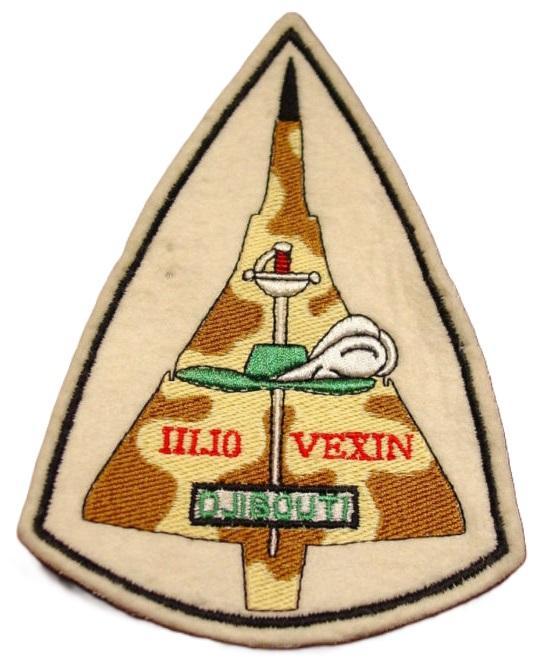
- EC 4/30 "Vexin":
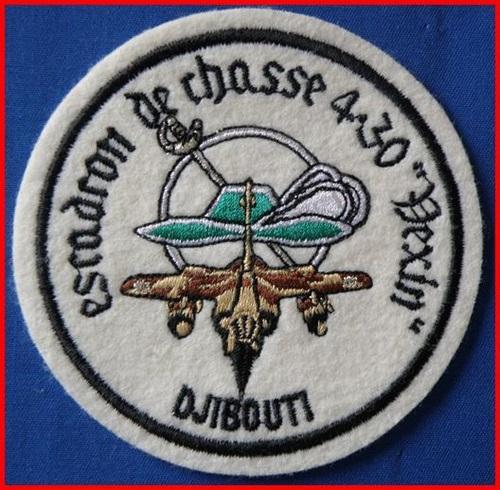
- EC 4/33 "Vexin":

- Gray Musketeer / Mousquetaire gris 1e Escadrille ERC 3/561:
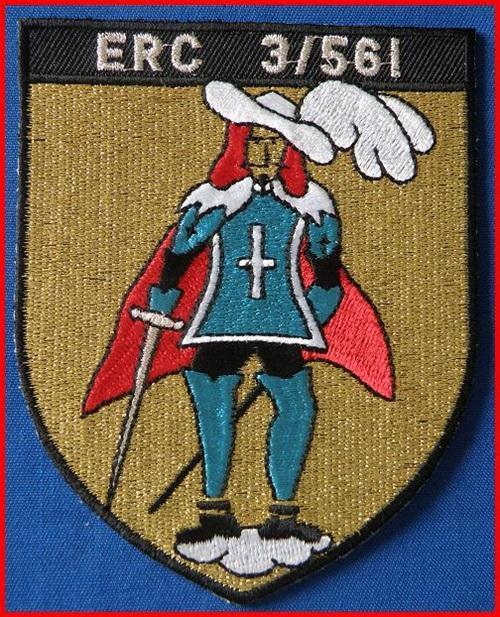
- Black Musketeer / Mousquetaire noir 2e Escadrille ERC 4/561:
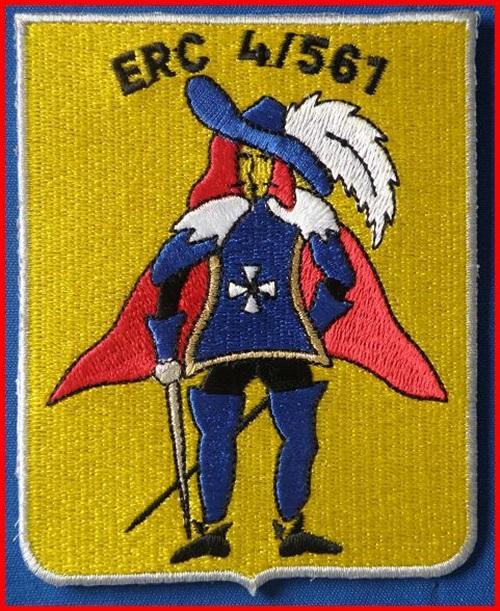
- Change of Planes:
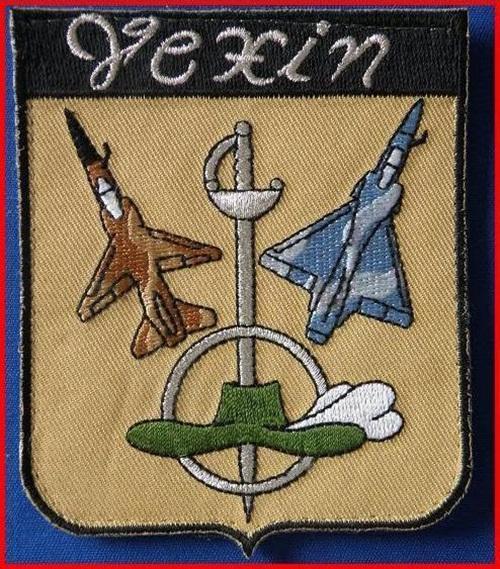
- Bye-bye Mirage F1:
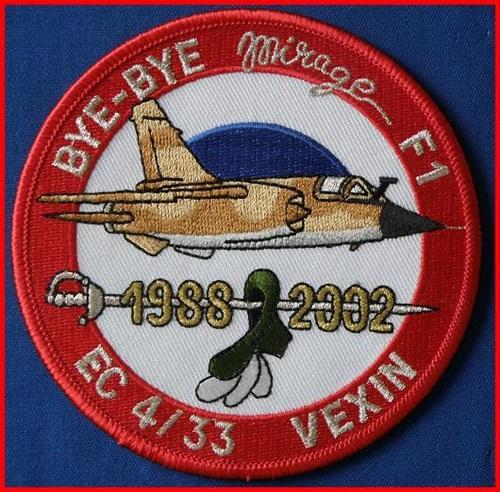
- 4/33 "VEXIN" Mirage 2000 D :

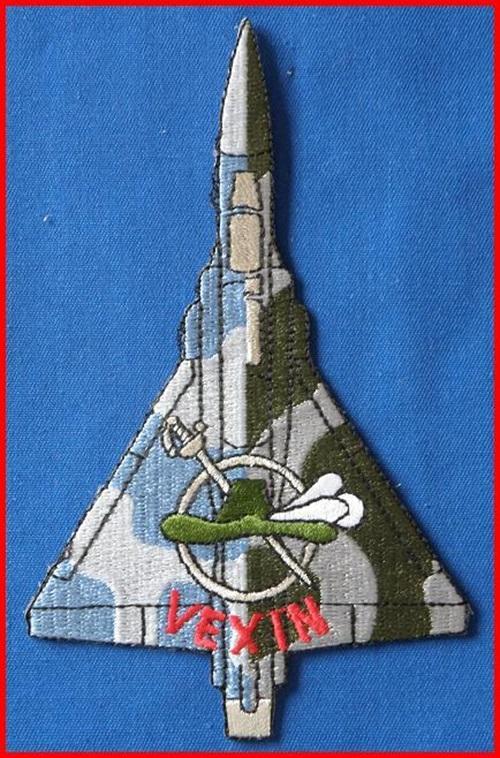
- 4/33 VEXIN Mirage 2000 C :
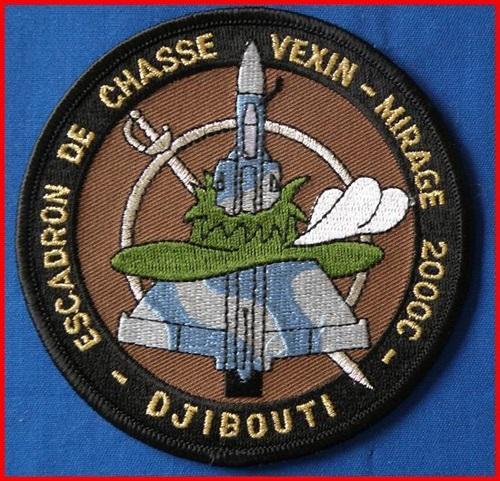
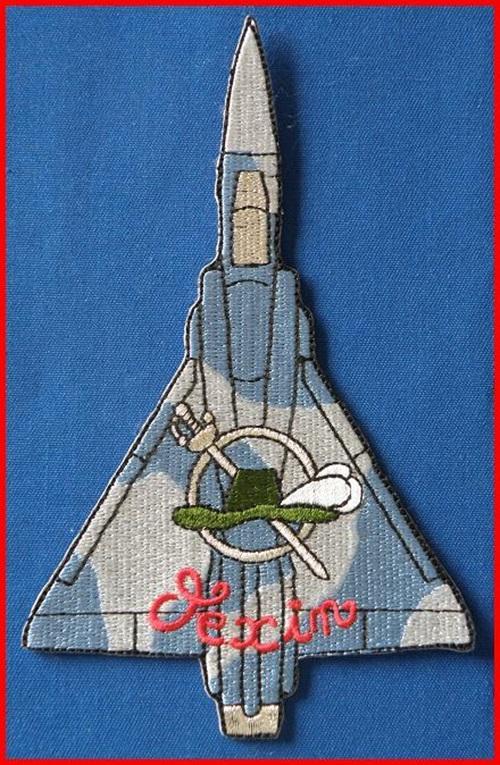
- Disbandment of Fighter Squadron 4/33 "VEXIN" (100 patches ordered):

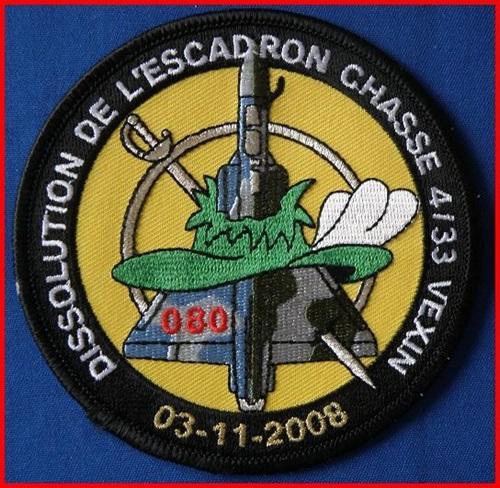
And there is this patch, the infamous "Khat 33" of the ground crew (very popular with them).
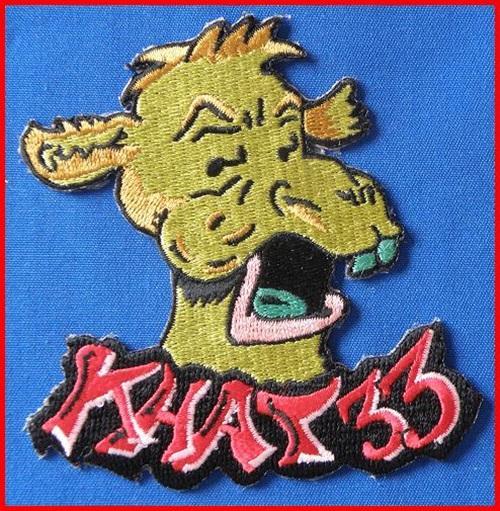
There is a play on words, but it did not please the authorities and was prohibited from being worn.
Khat = 4 'quatre' in French, so 4/33 = Khat 33. But "Khat" is a recreational stimulant, well a drug.
Yours sincerely,
No one
0 -
Dear Hugh,
What about your piece? I'm interested.
Did you read "The war of the running dogs" by Noel Barber?
I love Malaysia. I read all the books by Somerset Maugham and the "Malayan trilogy" by Anthony Burgess.
Not forgeting the classic "The jungle is neutral" by F.Spencer Chapman D.S.O. and the 2011 "Spy Master" by Boris Hembry.
And more...
Yours sincerely,
No one
0 -
Dear Gentlemen,
3/10 - 4/30 - 4/33 "Vexin" Fighter Squadrons* in Djibouti.
*Escadrons de Chasse 3/10 - 4/30 - 4/33 "Vexin" / EC 3/10 - 4/30 - 4/33 "Vexin"
Fighter Squadron 3/10 "Vexin": from September 1, 1978 to August 1, 1988
Fighter Squadron 4/30 "Vexin": from August 1, 1988 to June 27, 1994
Fighter Squadron 4/33 "Vexin": from June 27, 1994 to November 3, 2008
History: plaquette_EC_3-10_Vexin.pdf (traditions-air.fr)
The EC 3/10 "Vexin" was created on September 1, 1978, taking up traditions successively carried by the Musketeers Fighter Group (which had fought at the start of the Second World War before being dissolved in July 1940), the EC 3/10 "Valois" (1951-1954 on P-47 Thunderbolt) then the EC 2/20 "Ouarsenis" (1956-1963, on P-47 Thunderbolt then AD-4N Skyraider).
Equipped with Mirage IIICs, the squadron is deployed at Air Base 188 Djibouti as part of a defense agreement between France and the Republic of Djibouti. While the 10th Fighter Wing was disbanded in May 1985, the EC 3/10 "Vexin" nevertheless remained active until June 1988. It was then the last Air Force unit to fly on Mirage IIIC , before its transformation on Mirage F1 and its transfer to the 30th Fighter Wing where it became the 4/30 "Vexin" Fighter Squadron.
The EC 4/30 "Vexin" was created in July 1988, taking over the traditions and missions of the 3/10 "Vexin" fighter squadron. Equipped with Mirage F1 fighters, it was deployed at Air Base 188 Djibouti as part of a defense agreement between France and the Republic of Djibouti. In June 1994, the squadron became Fighter Squadron 4/33 "Vexin".
The EC 4/33 "Vexin" was created in mid-1994 by taking over the traditions and missions of the 4/30 "Vexin" Fighter Squadron. It is initially equipped with Mirage F1Cs, deployed at Air Base 188 Djibouti as part of a defense agreement between France and the Republic of Djibouti.
The squadron began to receive its first Mirage 2000Cs in September 2001, followed in mid-July 2002 by Mirage 2000Ds which allowed the definitive withdrawal of the Mirage F1s. Since this date, the EC 4/33 "Vexin" was not only the only Air Force fighter unit permanently stationed overseas, but also the only one equipped with both Mirage 2000C (single-seat fighters) and Mirage 2000D (attack/bomber two-seater).
EC 4/33 has been replaced since November 3, 2008 by the 3/11 "Corse" Fighter Squadron.
- Squadron insignia homologation Air A.1143 1979 for the three squadrons:
- EC 3/10 "Vexin" without maker:
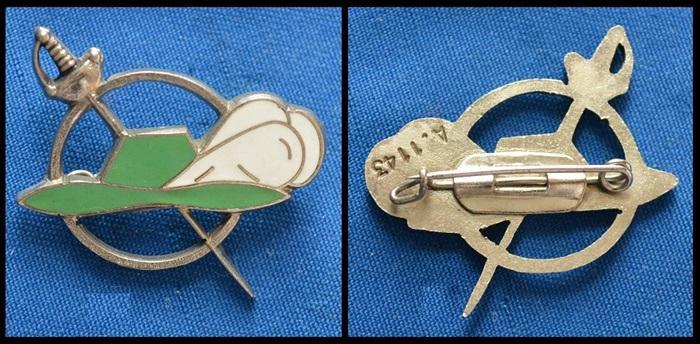
- EC 4/30 - 4/33 "Vexin" without maker's name FIA Lyon :
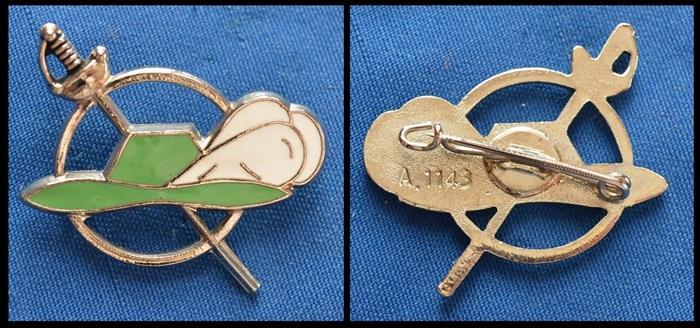
- EC 4/30 - 4/33 "Vexin" Y.Delsart 89100 Sens:
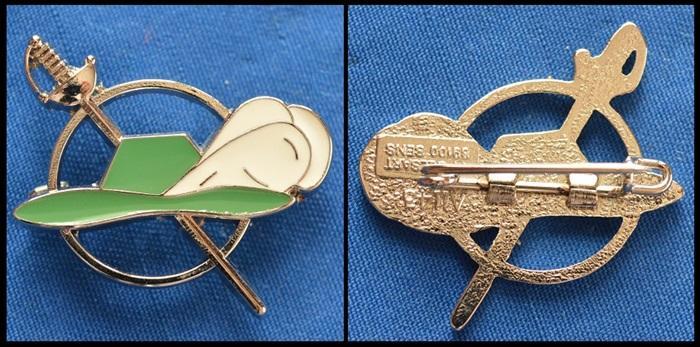
- Flights / Escadrilles
- Gray Musketeer / Mousquetaire gris 1e Escadrille homologation Air A.720 1957 Y.Delsart 89100 Sens:

- Gray Musketeer / Mousquetaire gris 1e Escadrille homologation Air A.720 1957 F.I.A Ed.Lyon:
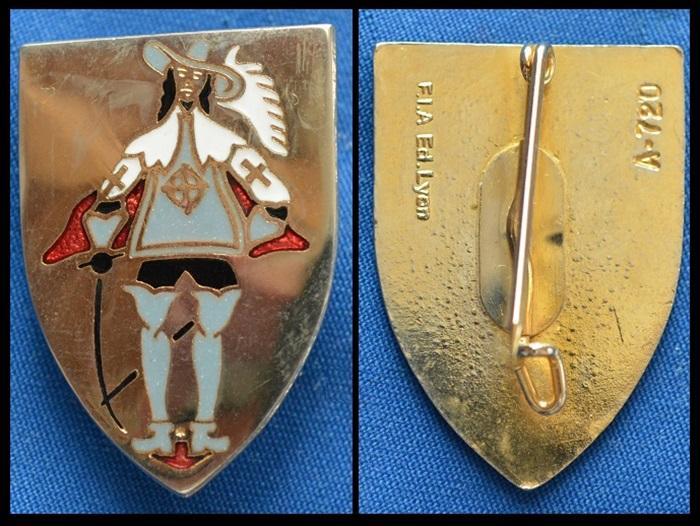
- Black Musketeer / Mousquetaire noir 2e Escadrille homologation Air A.768 1958 Y.Delsart 89100 Sens:
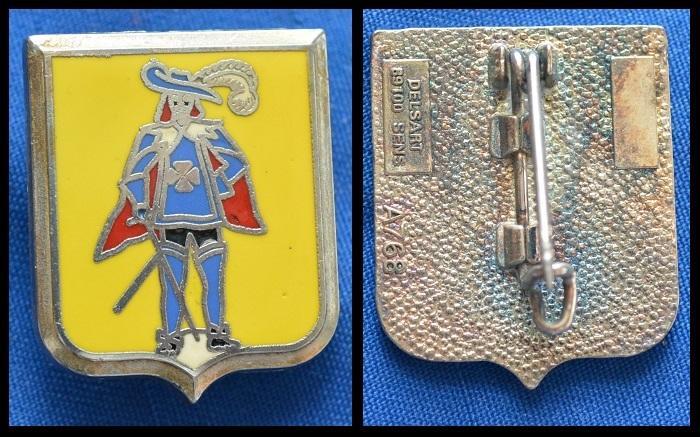
- Black Musketeer / Mousquetaire noir 2e Escadrille homologation Air A.768 1958 F.I.A Ed.Lyon:
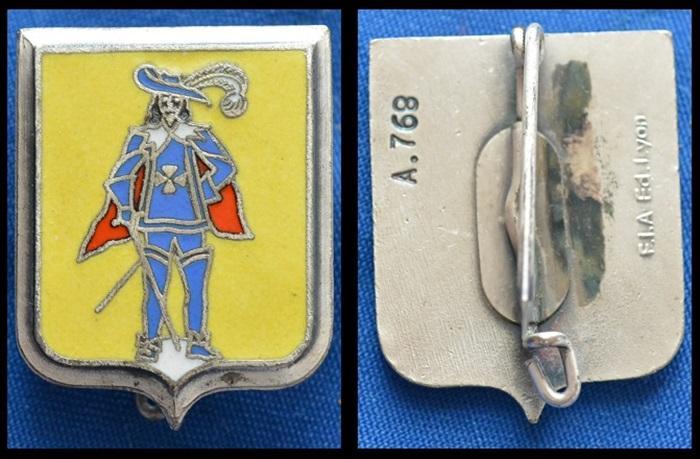
Note:The Musqueteers on the plane tails are red-haired, and the Black Musqueteer is actually blue.
- pin's:
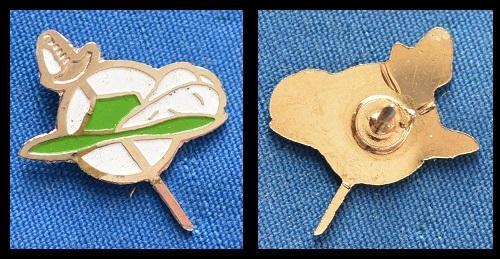
- Piste 3-10:

Yours sincerely,
No one
1 -
Dear Gentlemen,
The patches:
- 4/11 "Jura" SPA 158:
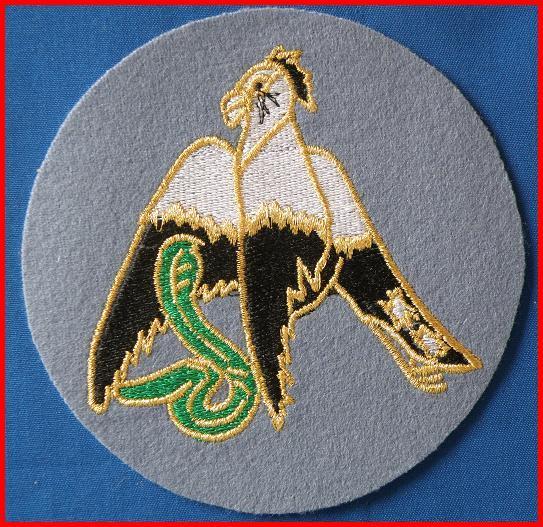
Disbanded on DA 188 in Djibouti on New Year's Eve 1978 and recreated the next day on BA.106 in Bordeaux-Mérignac, 4/11 Jura succeeded itself.It is said that the pilots who flew in Djibouti wore a red background SPA 158 patch upon returning to France.
- 4/11 "Jura" SPA 161:

- cannetille patch of the 4/11 "Jura" veterans association / amicale du 4/11 "Jura" :
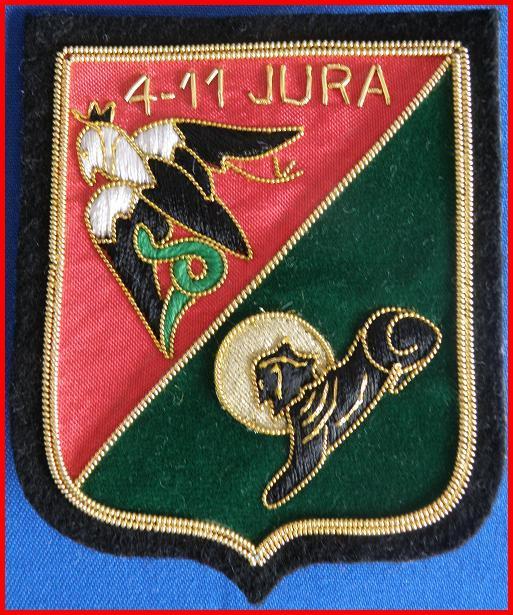
Yours sincerely,
No one
1 -
Dear Gentlement,
4/11 "Jura" Fighter Squadron* in Djibouti.
*Escadron de Chasse 4/11 "Jura" / EC 4/11 "Jura".
History: 🔎 Escadron de chasse 4/11 Jura - Définition et Explications (techno-science.net)
By decision No. 2831 of the EMAA of June 20, 1972, the 4/11 Jura fighter squadron was created on January 1, 1973.On the Air Base 188 from 1973 to 1978.
The unit takes up the insignia and traditions of 3/11 Jura.
The number of pilots is eight assigned and two detached from the 11th fighter wing relieved every three months.
The mechanical staff is as numerous as for a mainland squadron to ensure so-called "reinforced" maintenance due to the isolation more than 6,000 km from mainland France.- Squadron insignia homologation Air A.1103 September 05, 1977:
- EC 4/11 "Jura" FIA Lyon:
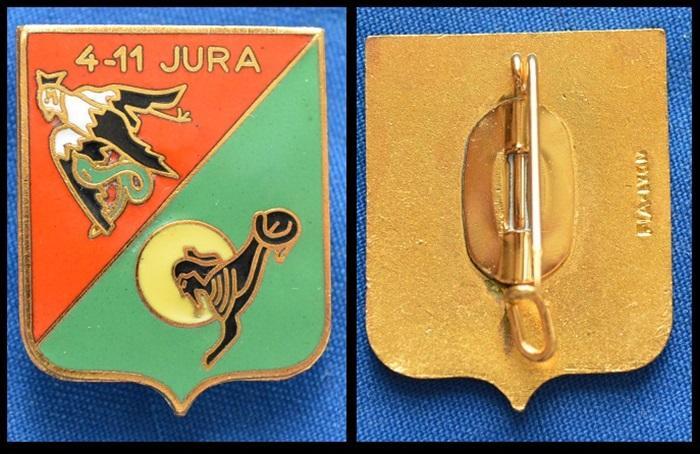
- EC 4/11 "Jura" without maker:
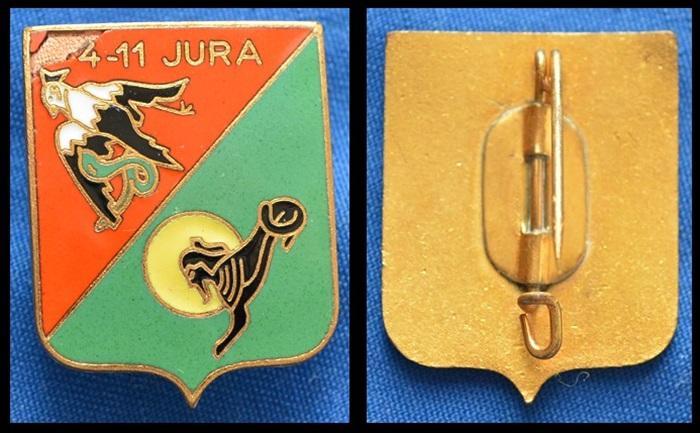
- Flights / Escadrilles
SPA 158, instruction No. 2595/EMAA/1/ORG/DR of November 27, 1972 recreates SPA 158 Serpentaire.
Homologation Air A.551 of July 24, 195.
Due to the reduced strength, it will initially be the only squadron of this fighter unit.It should be noted that the SPA 158 badge will be worn as a squadron badge by all personnel.
- SPA158 FIA Lyon:
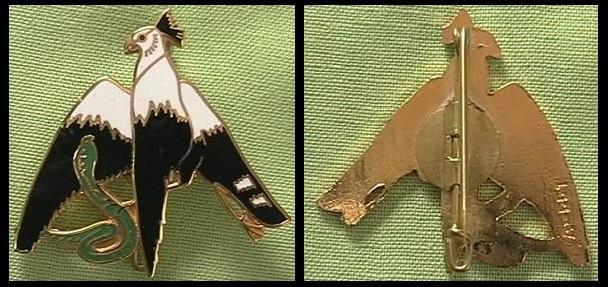
-pin's Paris Insignes:
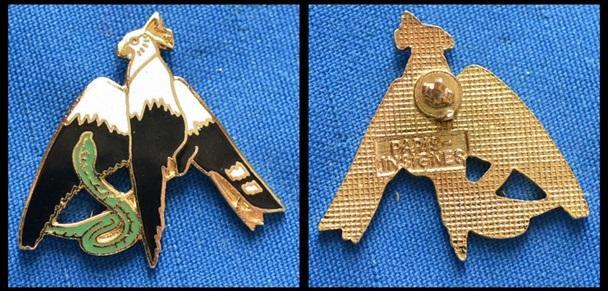
SPA 161, it was not until 1975, following the increase in numbers (pilots and planes), and instruction No. 10003/EMAA/1/ORG/DR of 01/11/1975,
that the second Jura squadron was officially recreated. SPA 161 “Sphinx”.
Homologation Air A.552 of July 24, 1953.
From this day forward, unit personnel will wear the squadron insignia.
- SPA 161:
I don't possess the insignia because it's a rare and costly item, and there are more fakes on the market than genuine ones.
But I have a miniature Paris Insignes:

Note: The squadron operates eight North American F-100 Super Saber fighter-bombers: 7 single-seat F-100Ds and 1 two-seat F-100F.
The 4/11 Jura had an article with a photo on the cover of N° 1 Air Fan of 01-11-1978:
"Les Requins de la Mer Rouge / The Sharks of the Red Sea"
Yours sincerely,
No one
0




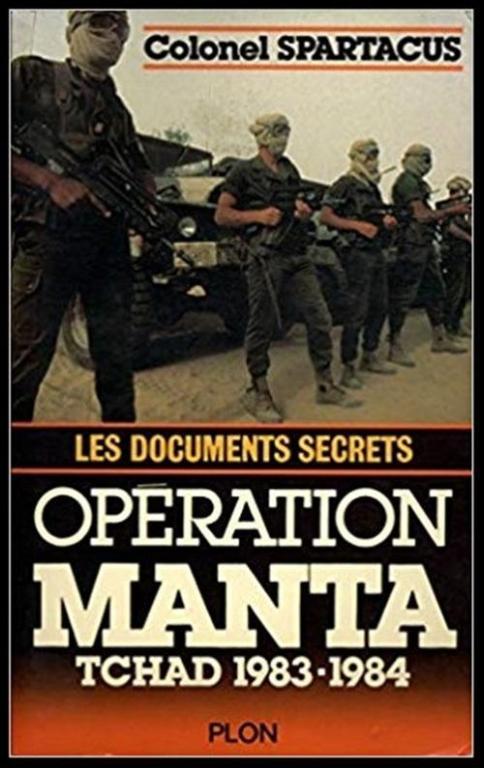
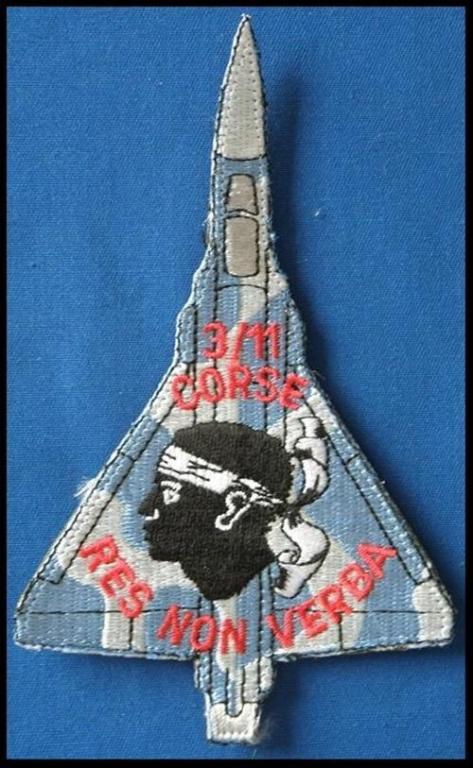
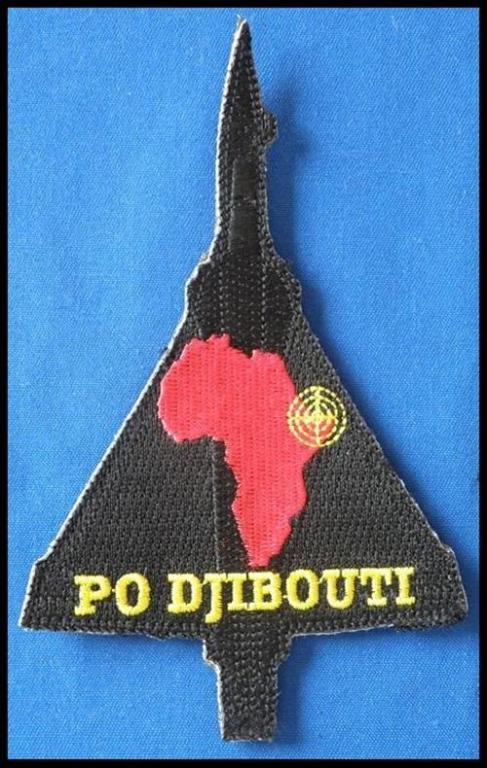

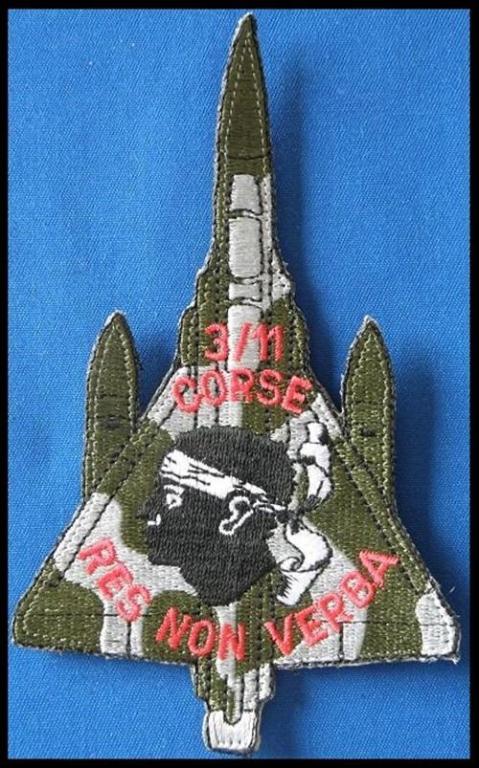
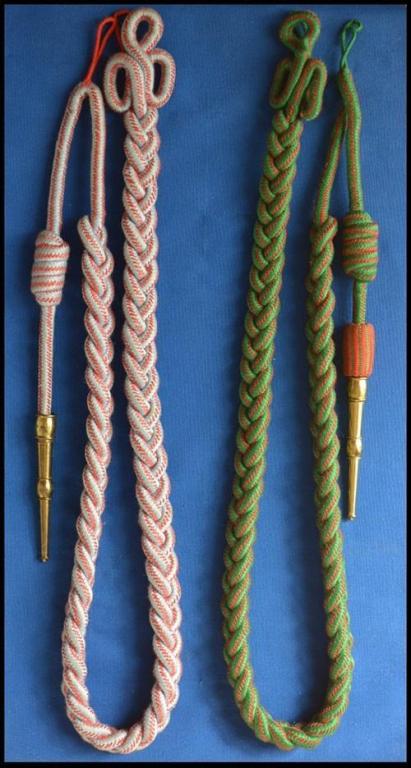
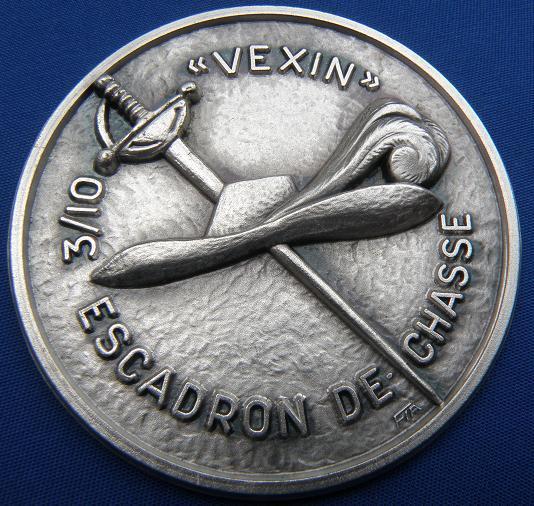
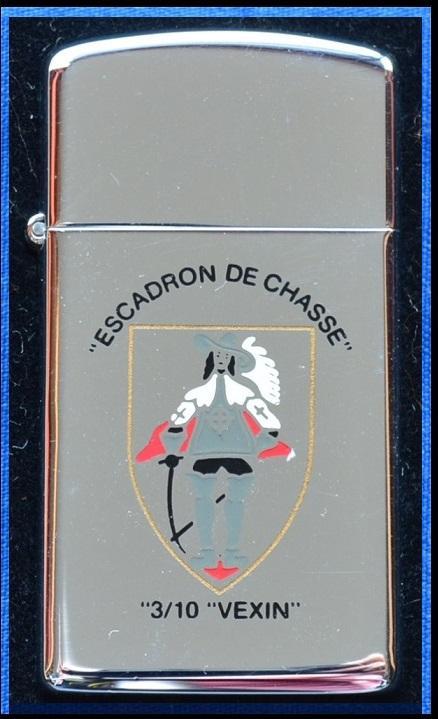

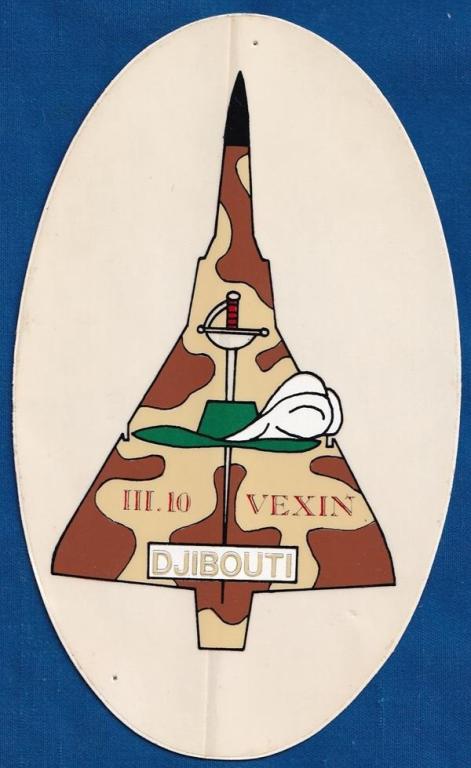
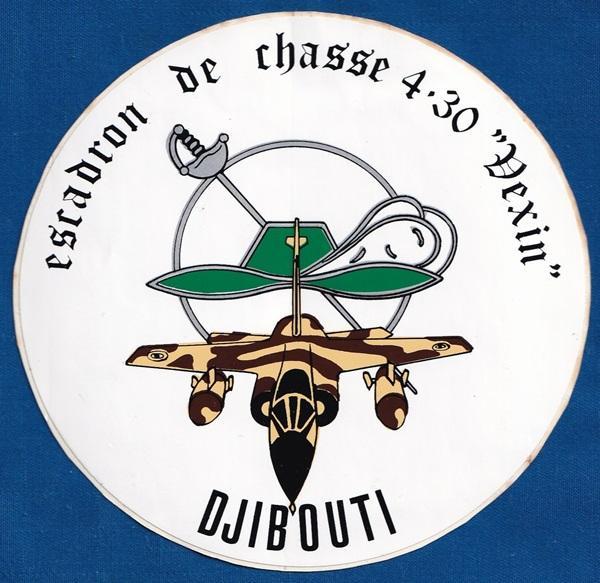


Joint-army Air Transit Station 09-188 in Djibouti
in France
Posted · Edited by No one
Dear Gentlemen,
Presentation of the patch of the Joint-army Air Transit Station 09-188* in Djibouti:
*Escale de Transit Aérien Interarmées** 09-188 / E.T.A.I. 09-188
**Army/Air-Force/Navy/Gendarmerie
And a letter I got with this patch:
Yours sincerely,
No one